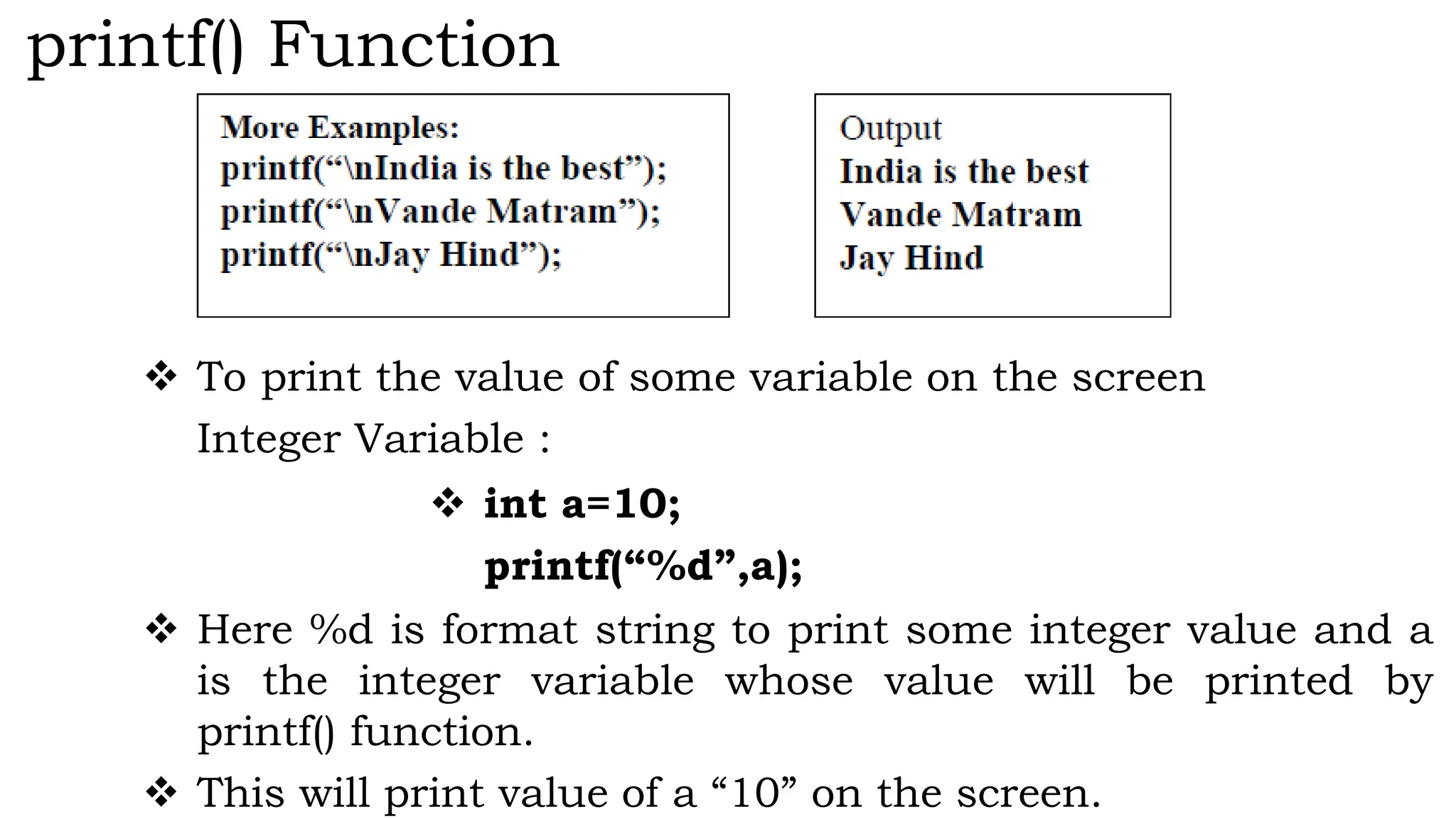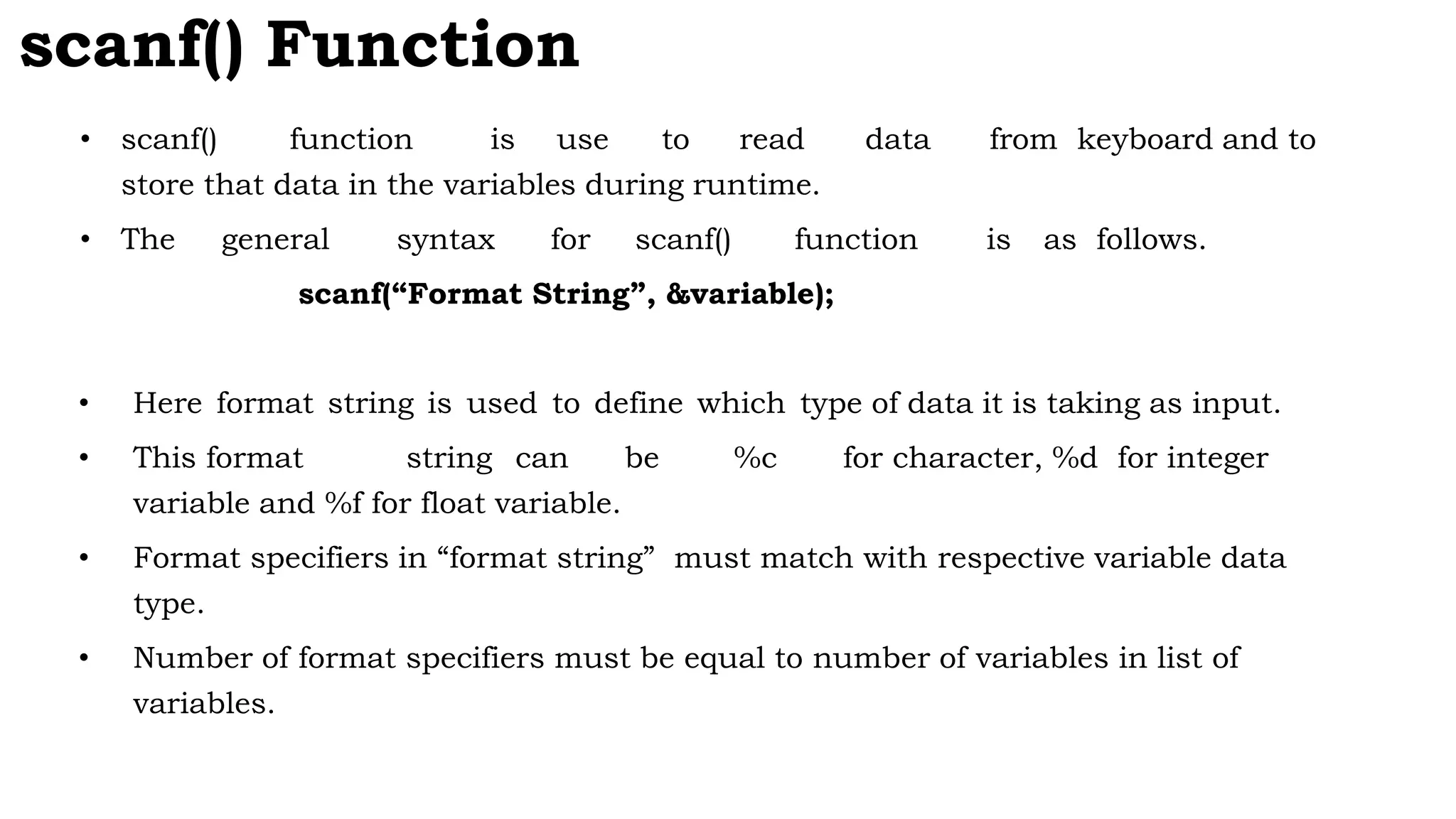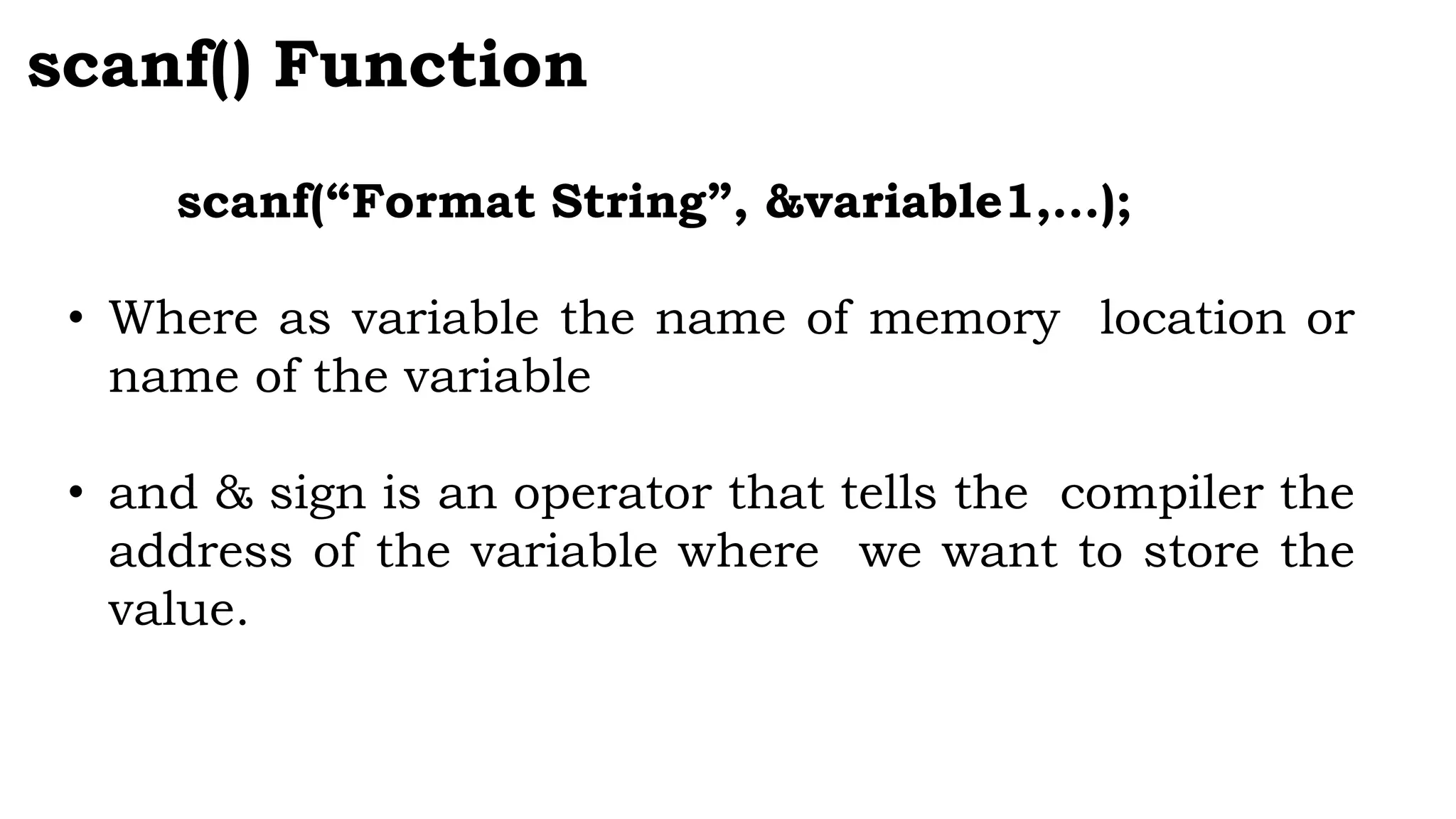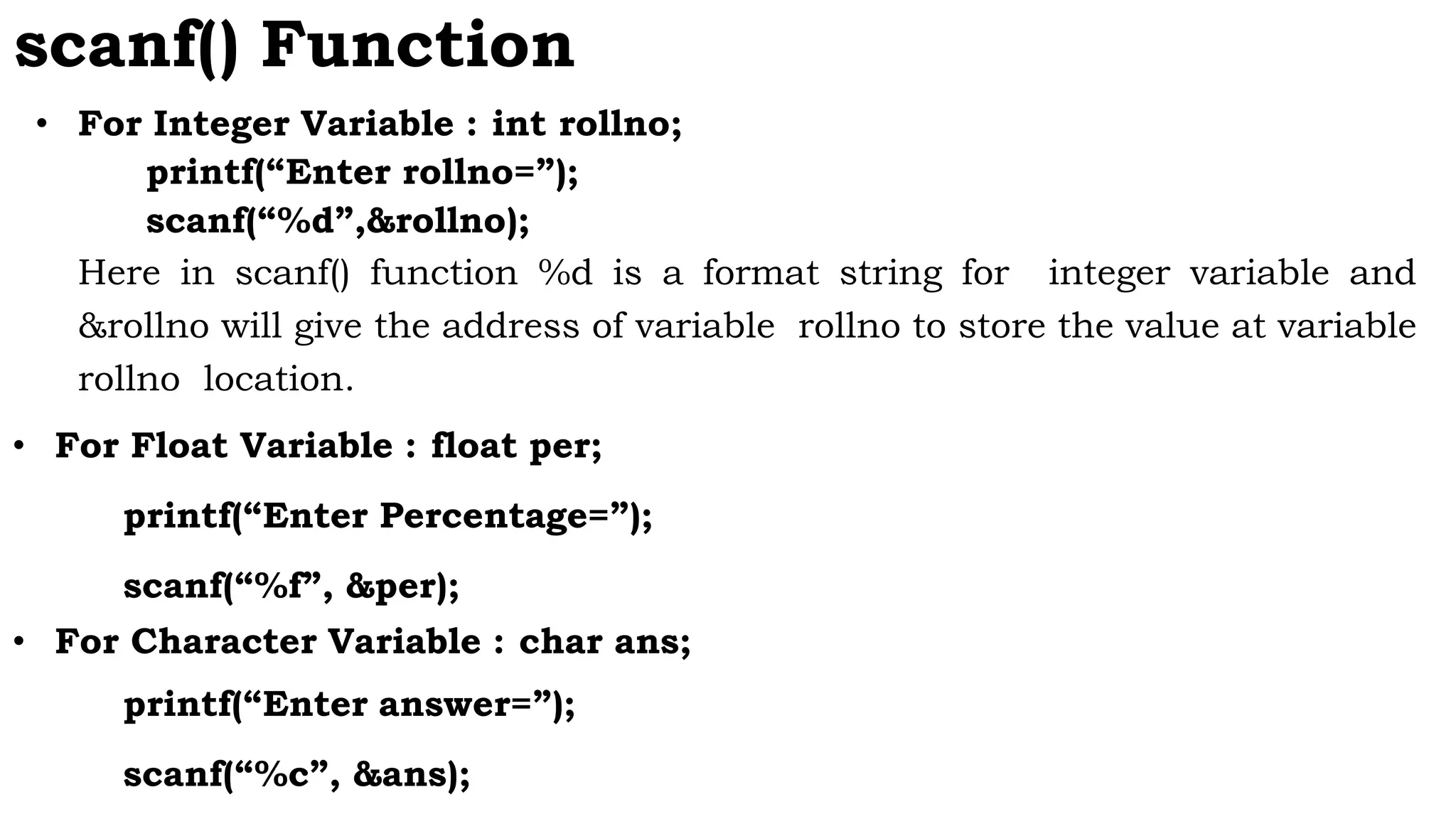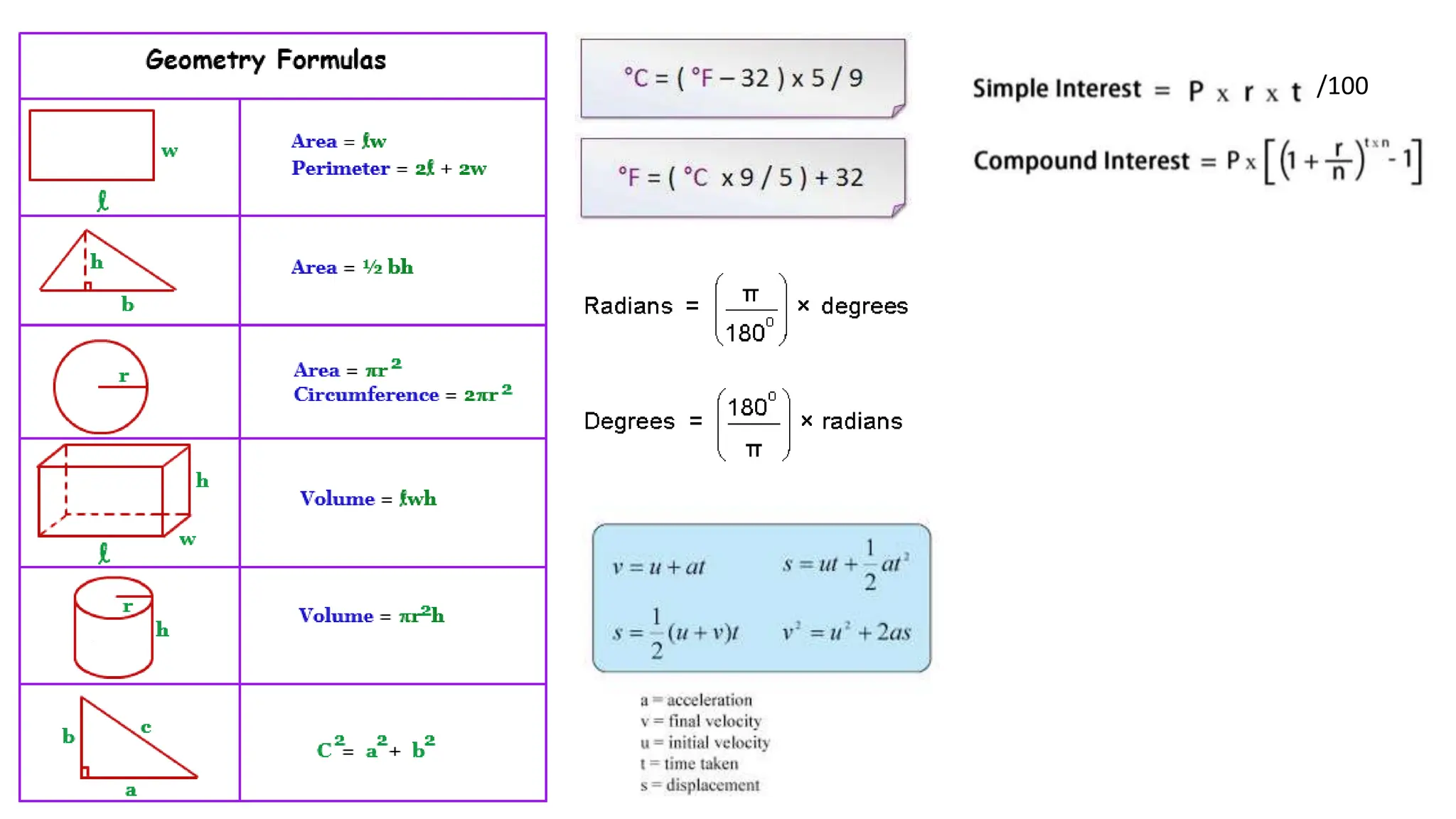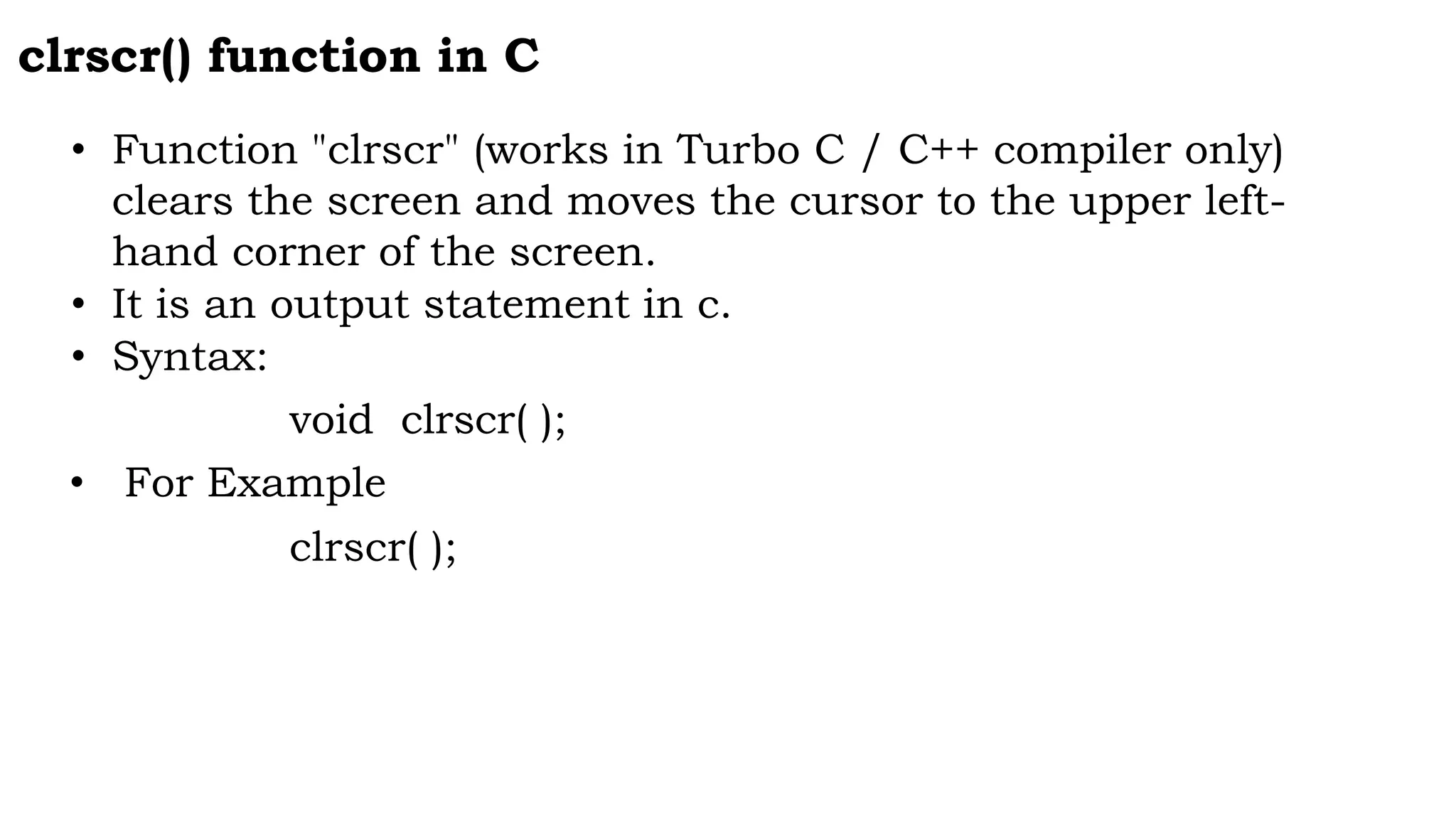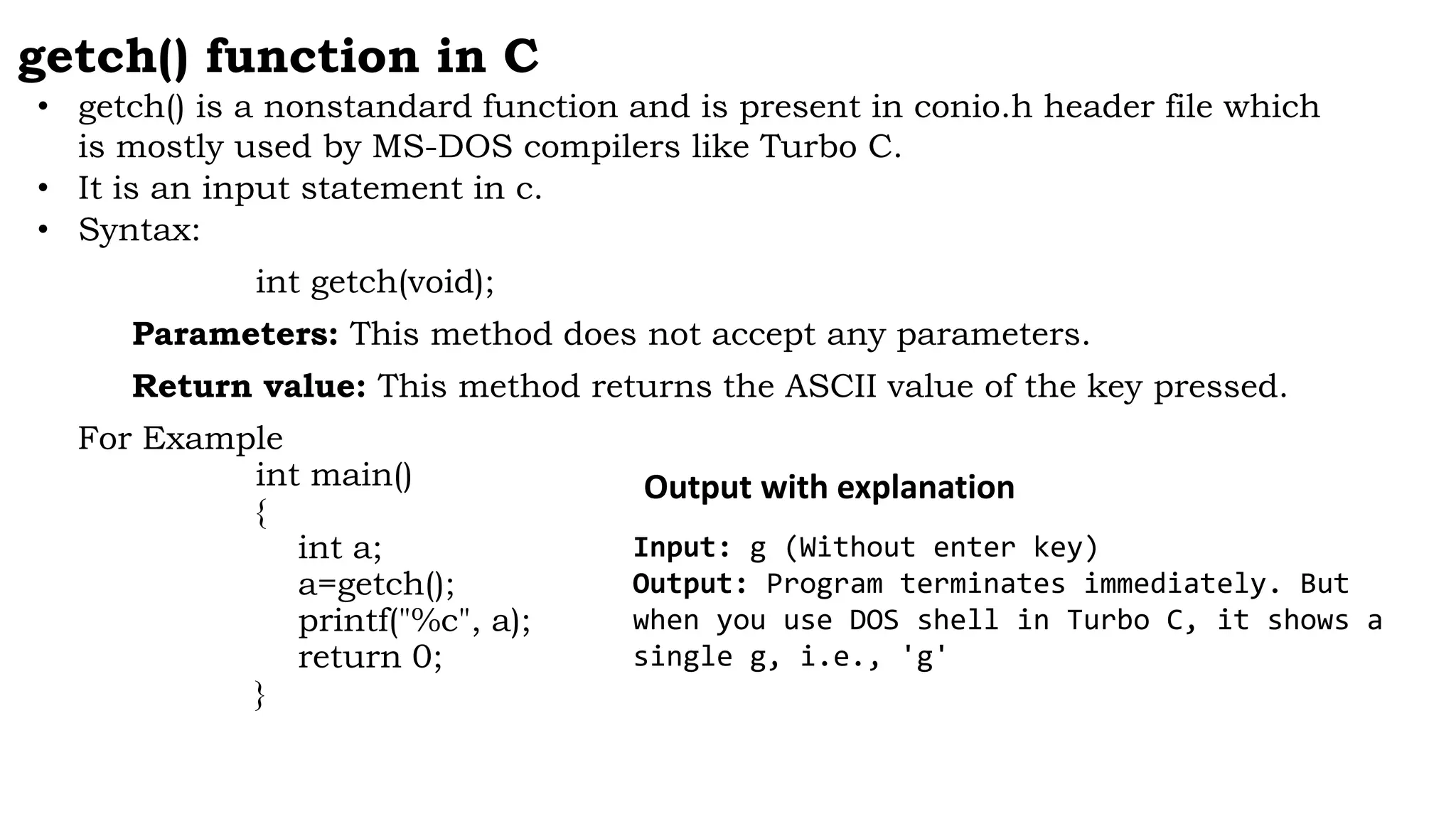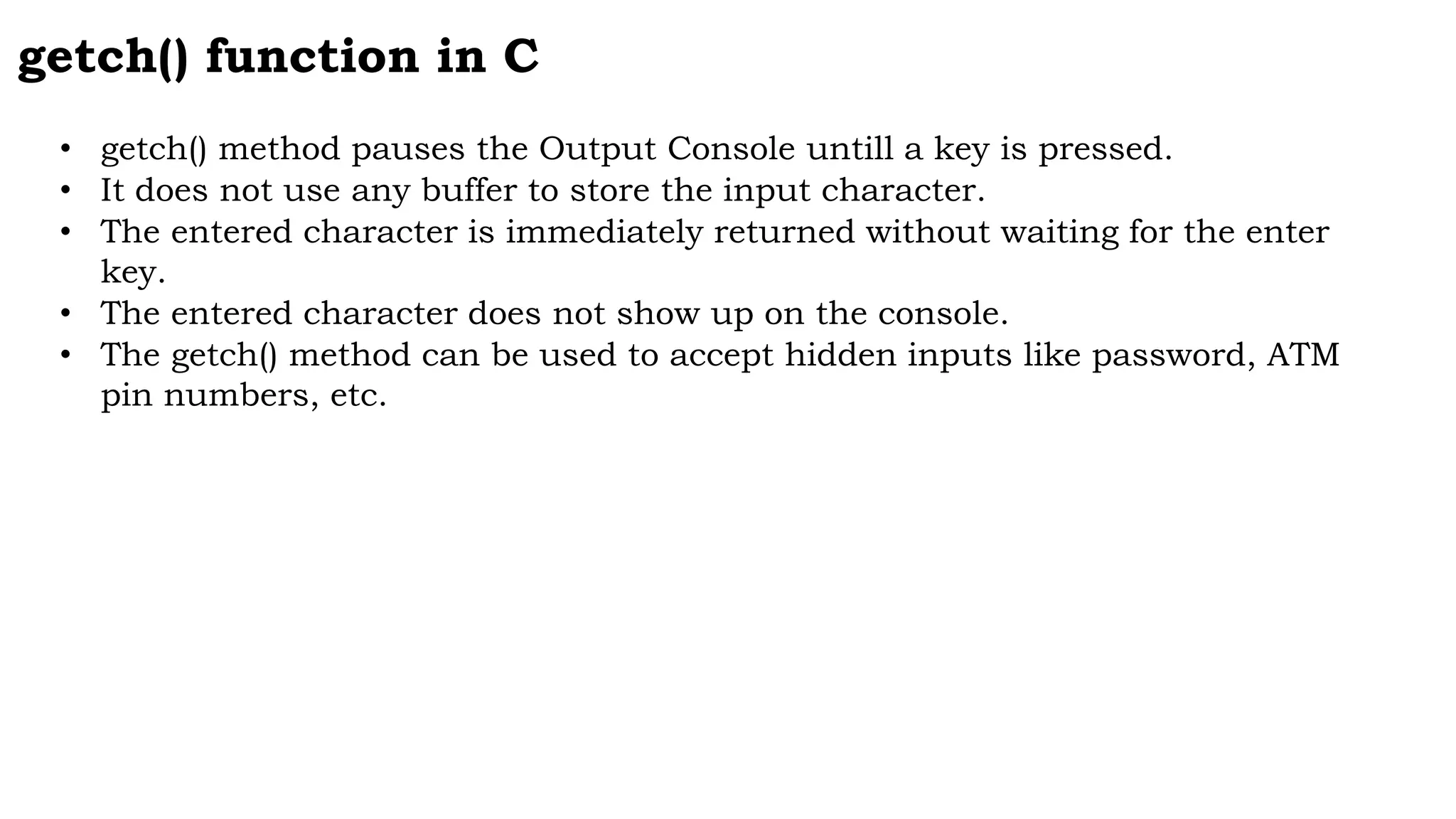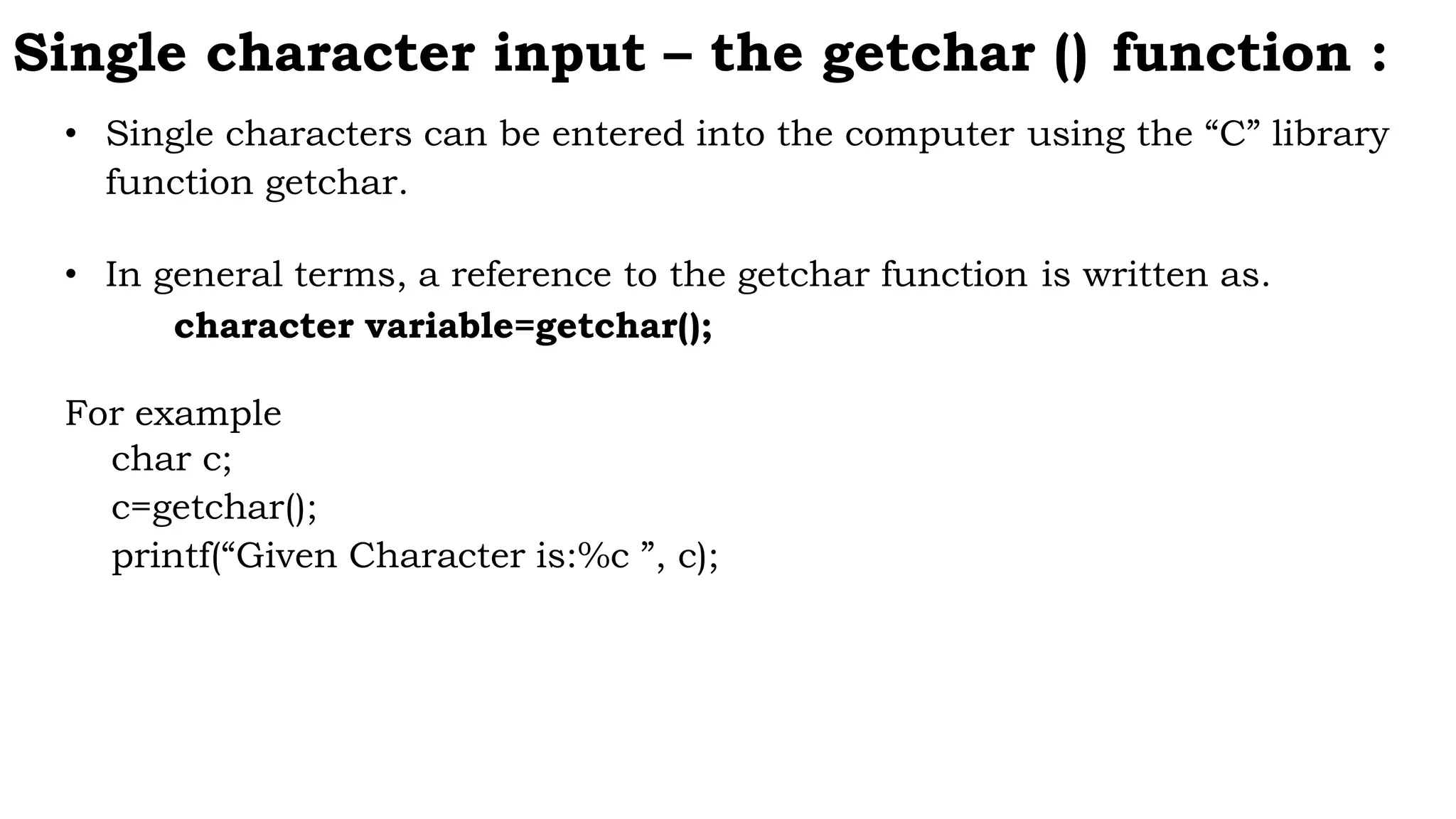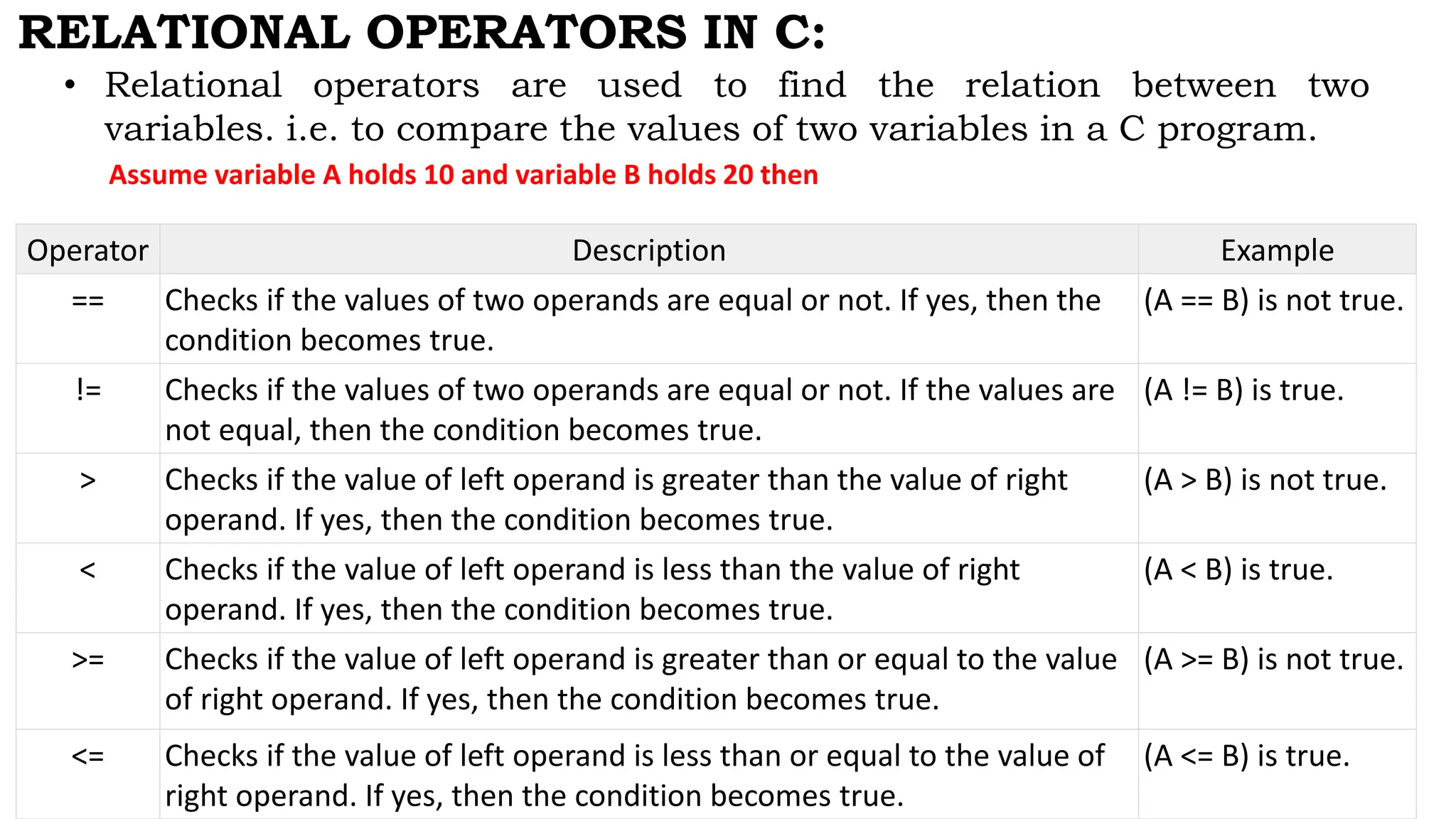The document provides an overview of the C programming language, its features, history, and various components such as tokens, keywords, constants, identifiers, and data types. It details the structure of a C program, including the usage of comments, operators, and input/output functions like printf() and scanf(). Additionally, it outlines the rules for naming variables and the types of elements that can be used in C programming.
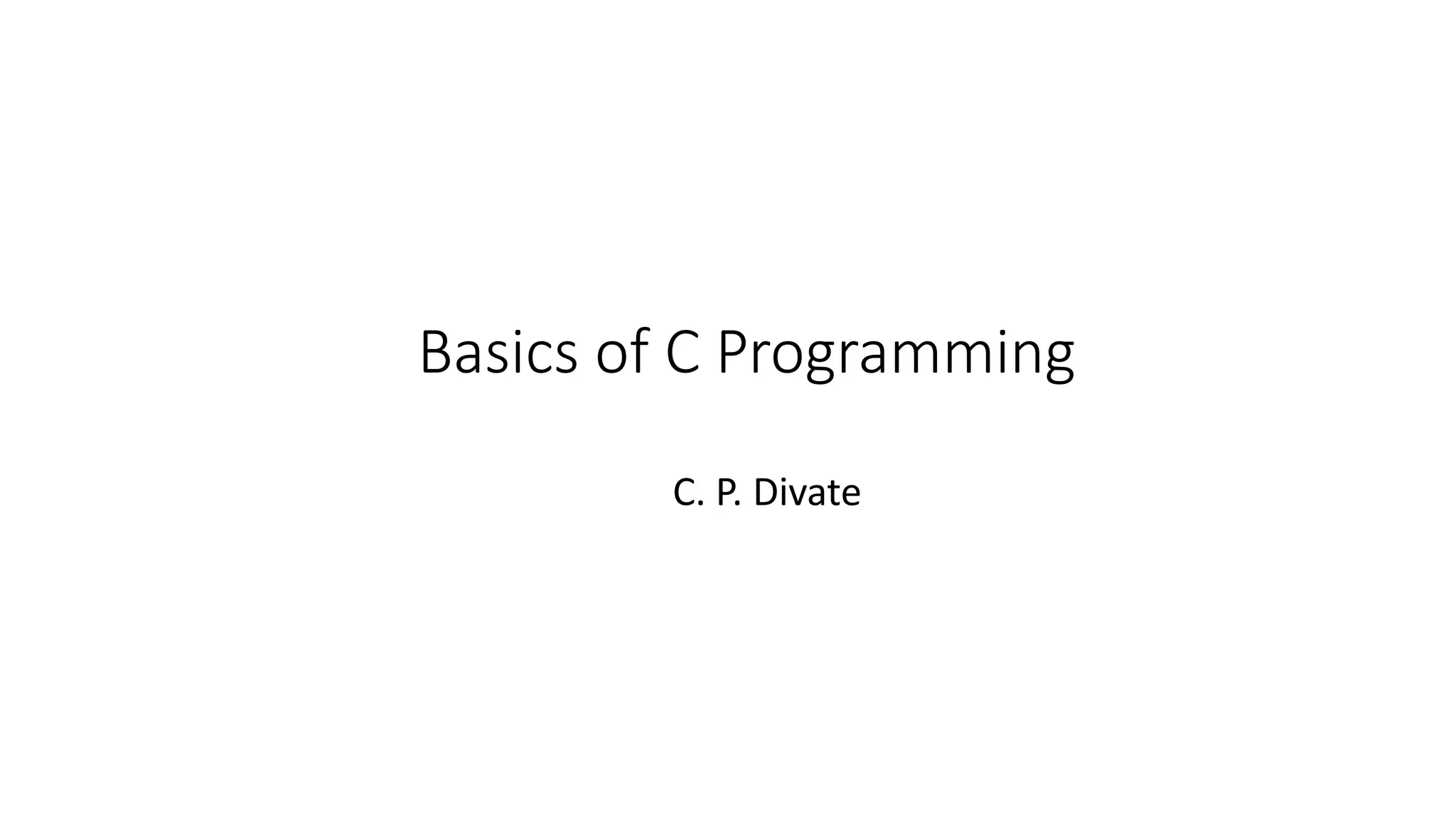

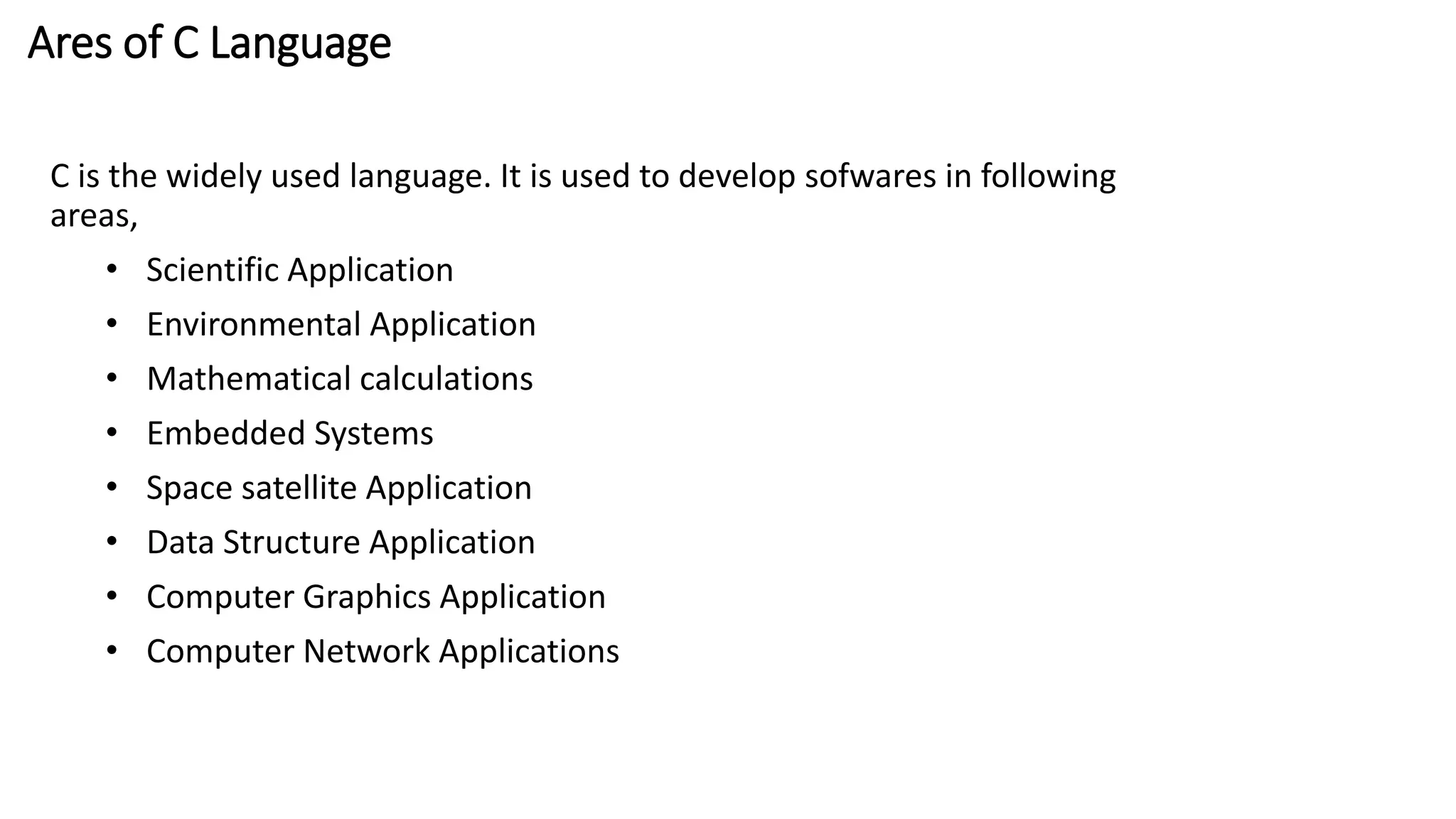
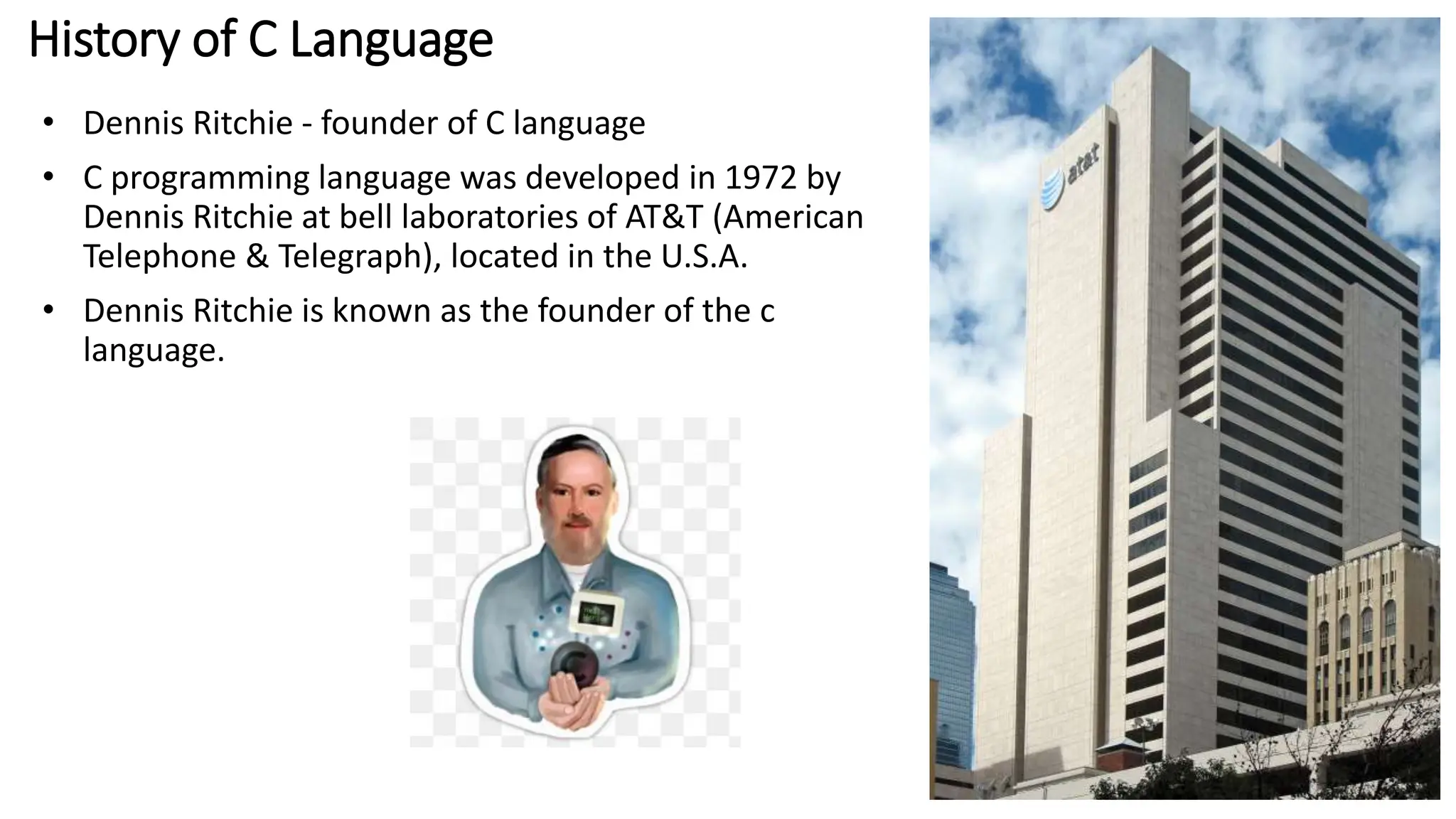
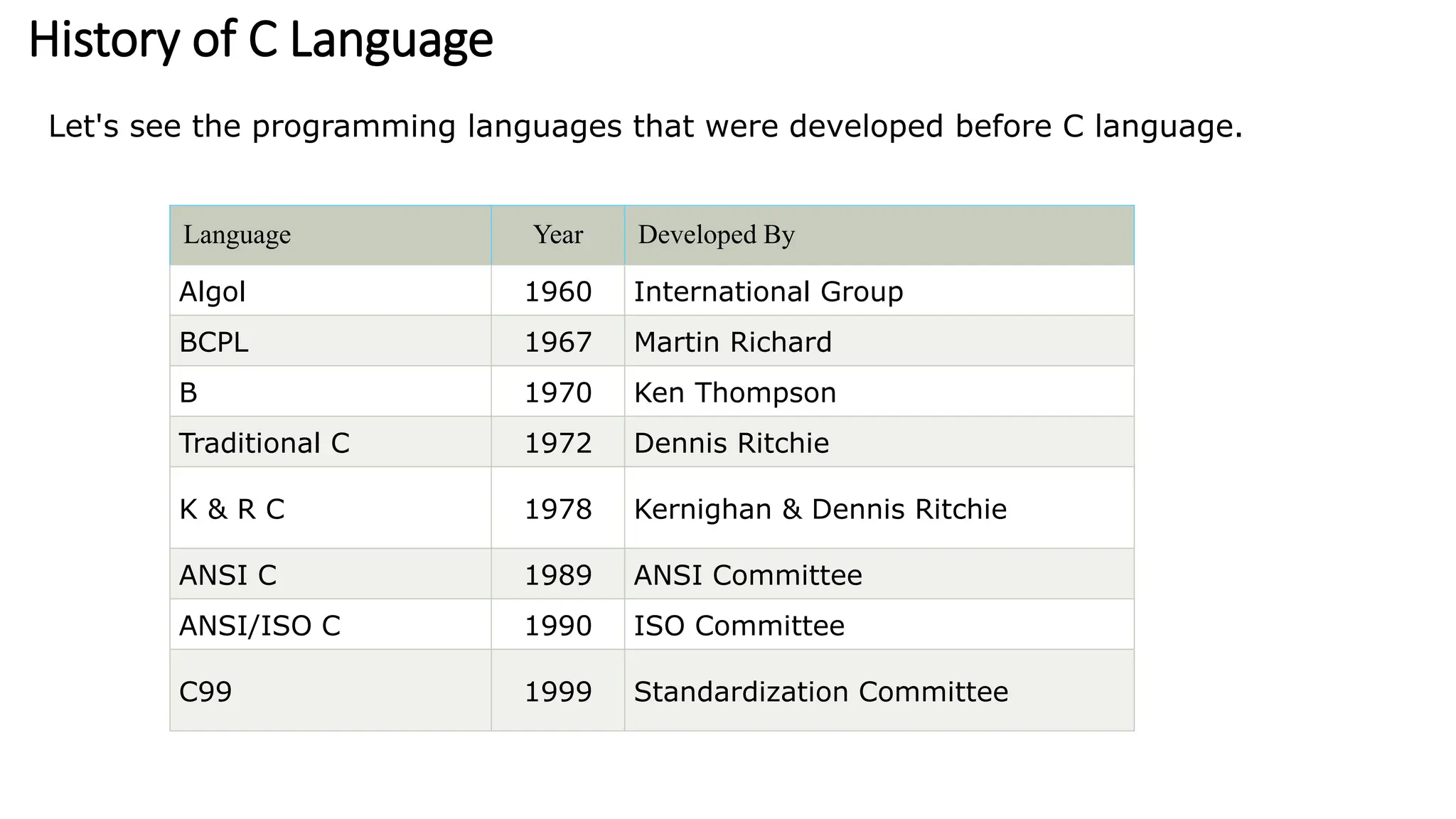

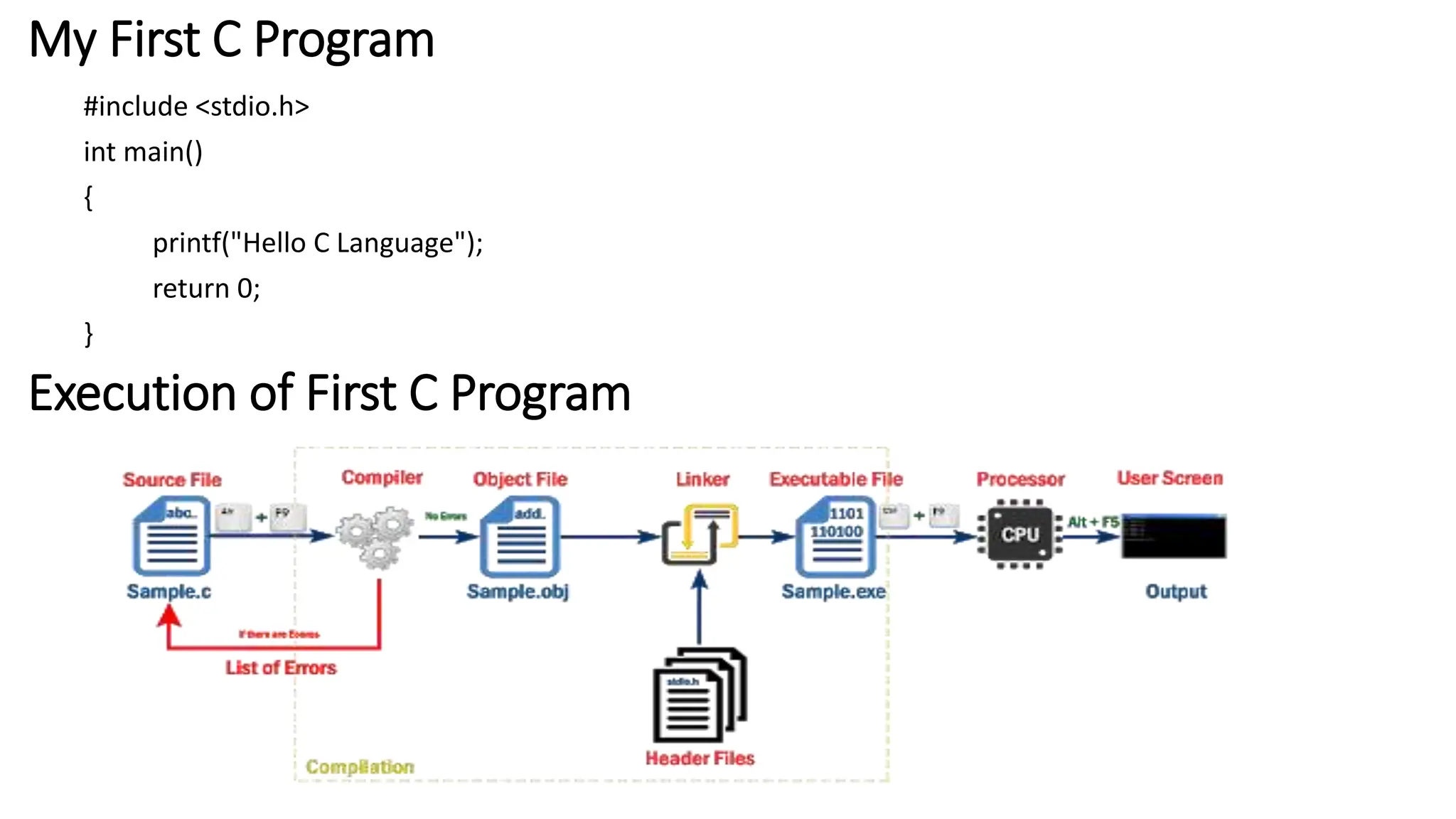
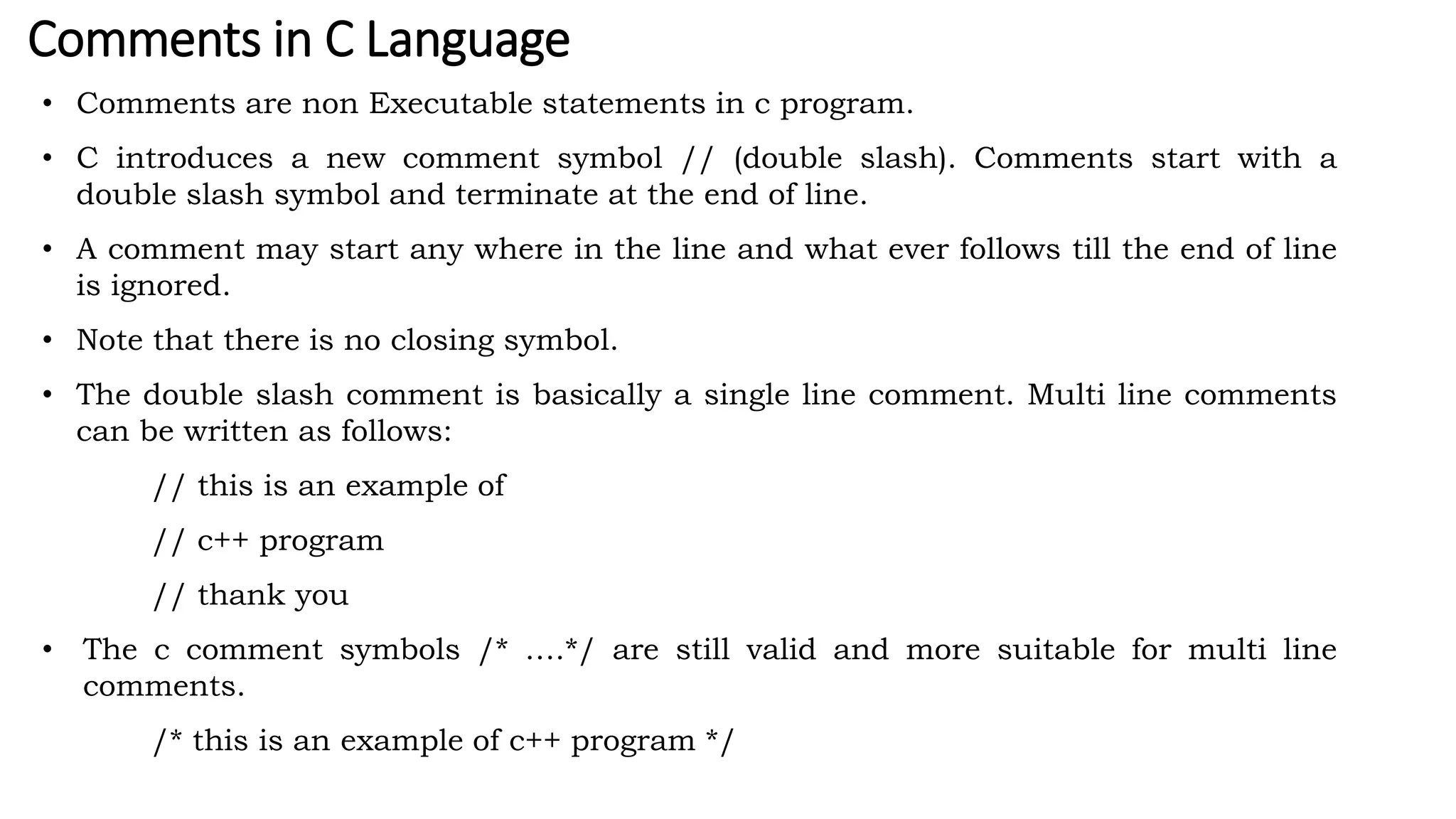
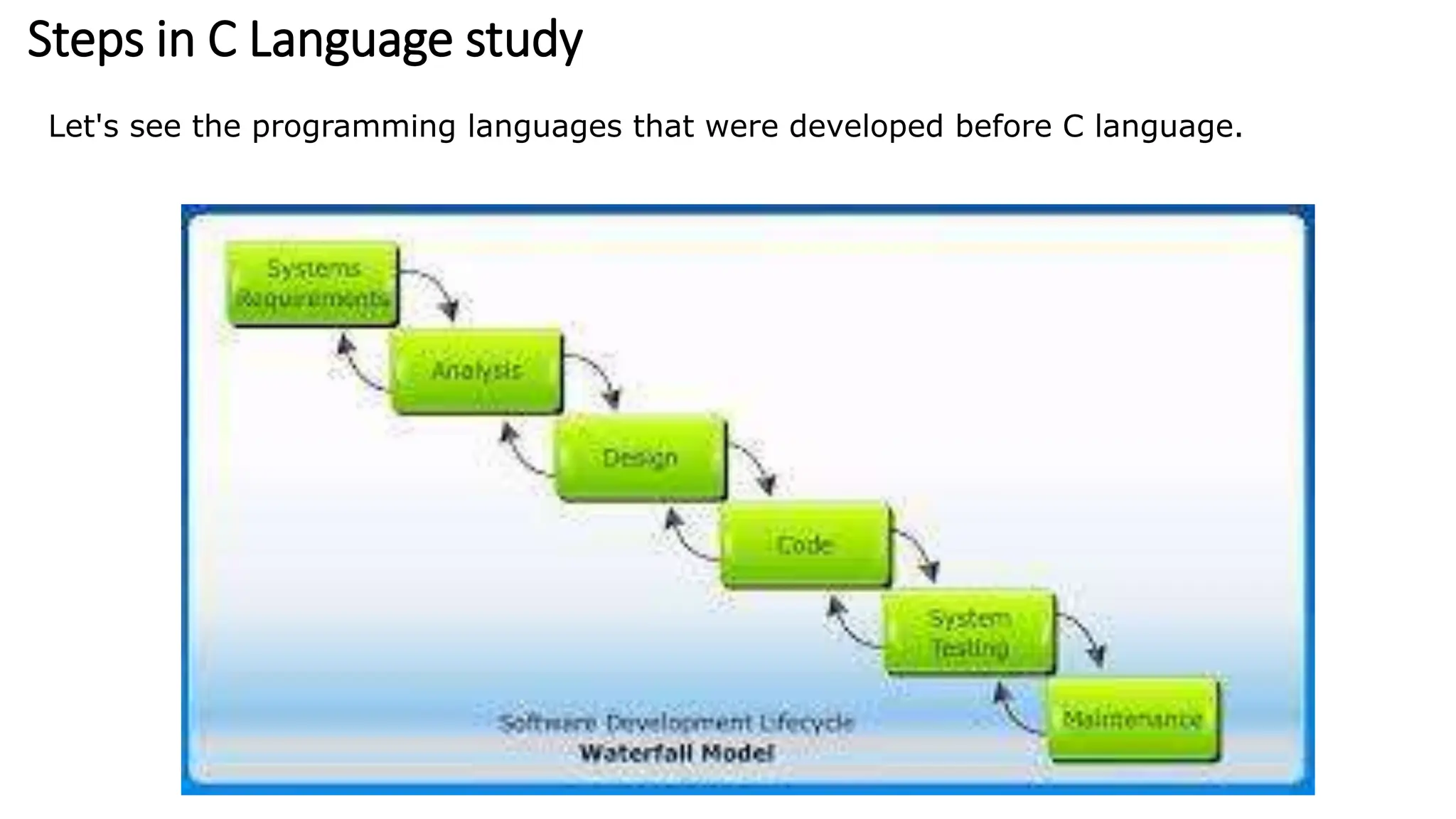
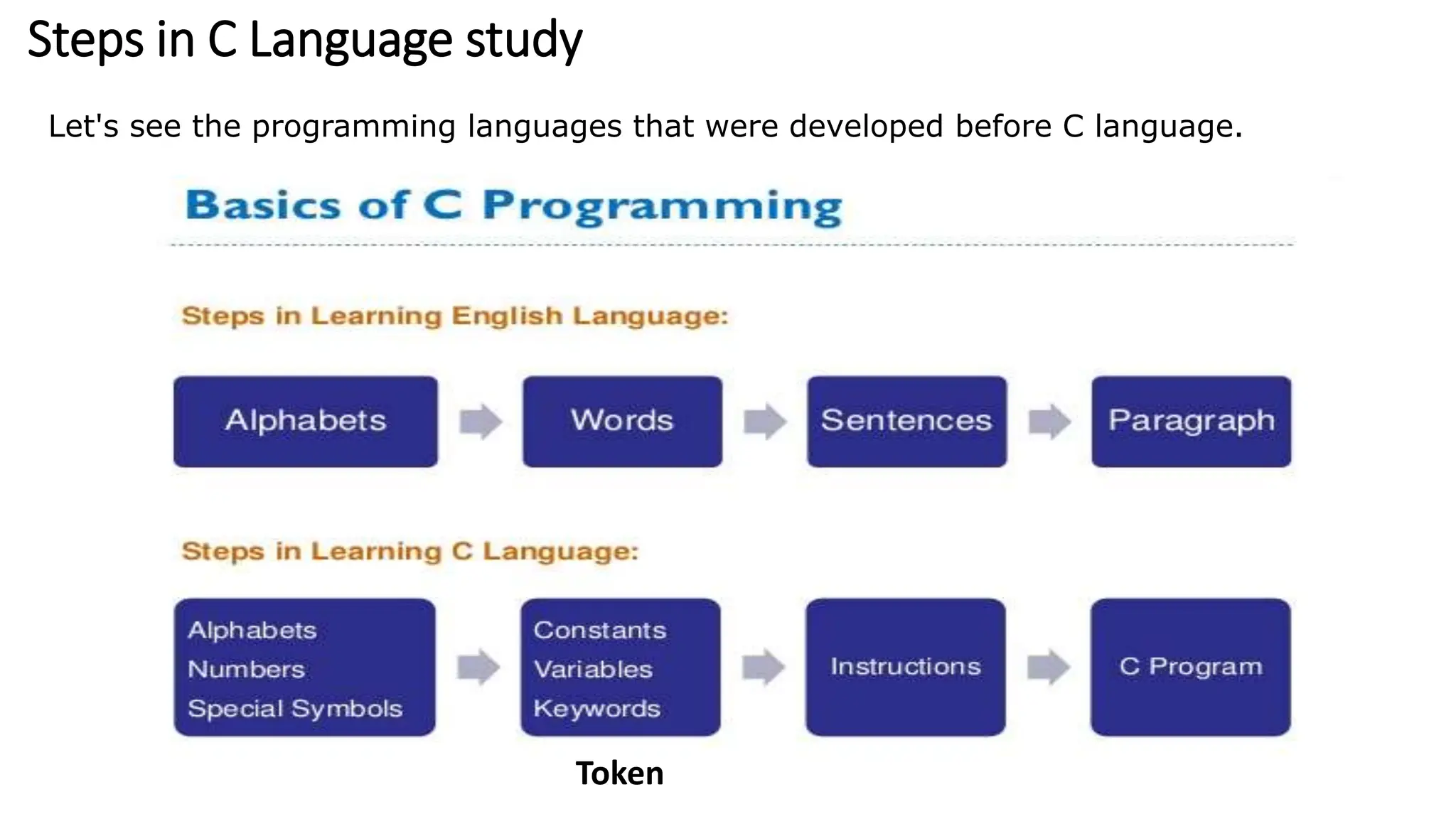
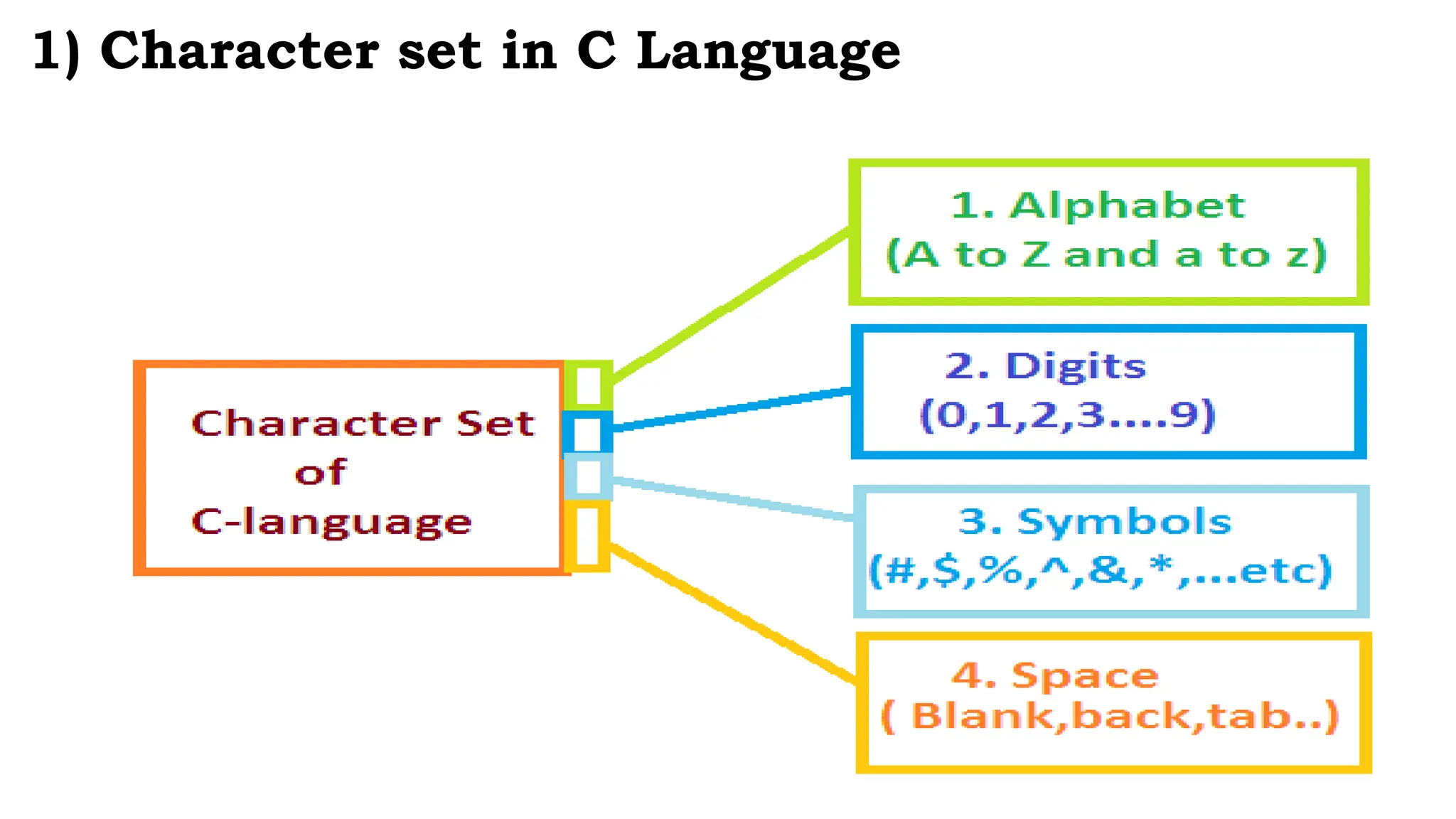
![1) Characters Used in C Programs
• Lowercase letters
• a b c . . . z
• Uppercase letters
• A B C . . . Z
• Digits
• 0 1 2 3 4 5 6 7 8 9
• Other characters
• + - * / = ( ) { } [ ] < > ‘ “
• ! @ # $ % & _ ^ ~ . , ; : ?
• White space characters
• blank, newline, tab, etc.](https://image.slidesharecdn.com/featuresofclanguage-part1-240510114508-94f920b1/75/Features-and-Fundamentals-of-C-Language-for-Beginners-12-2048.jpg)
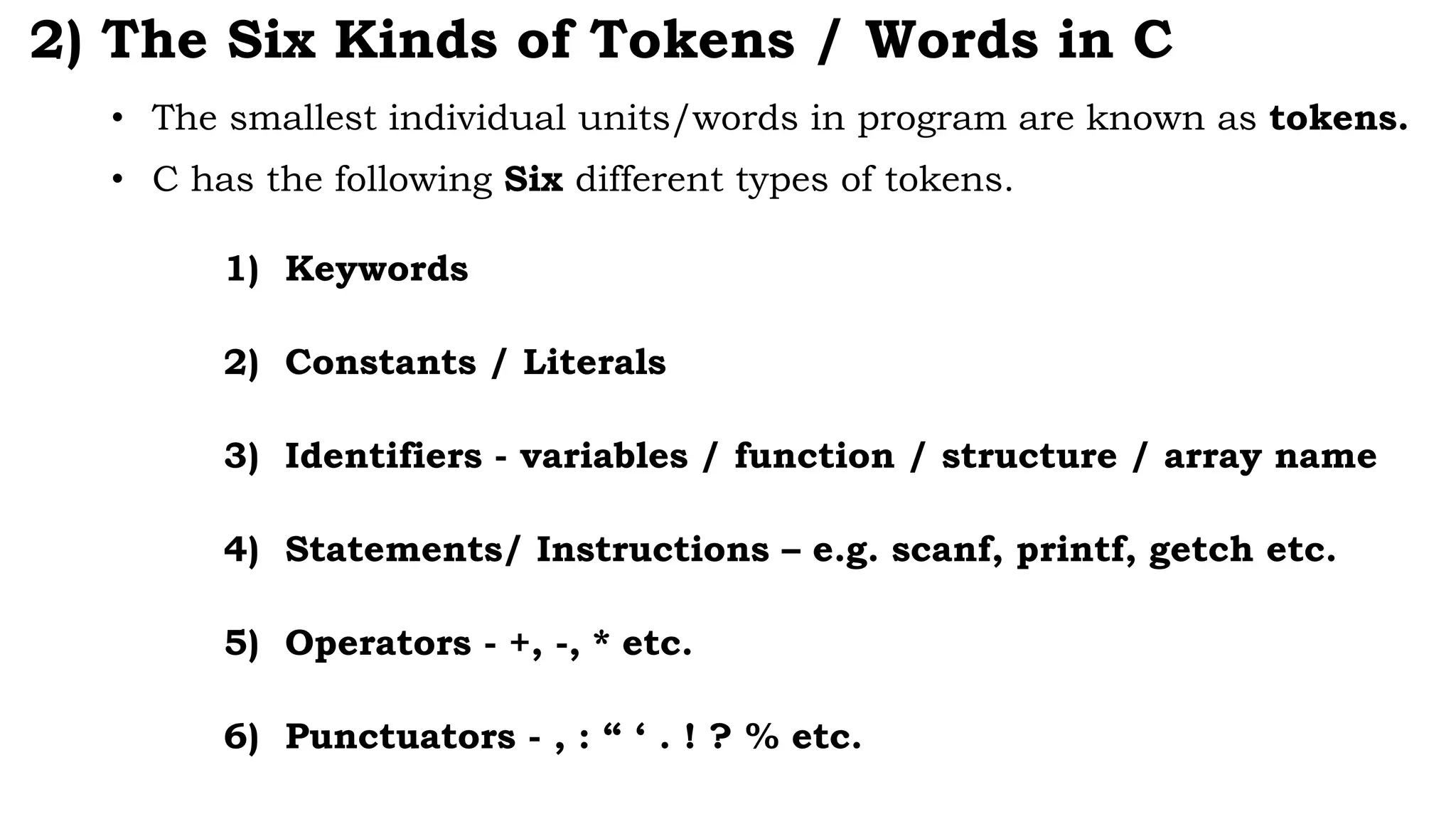
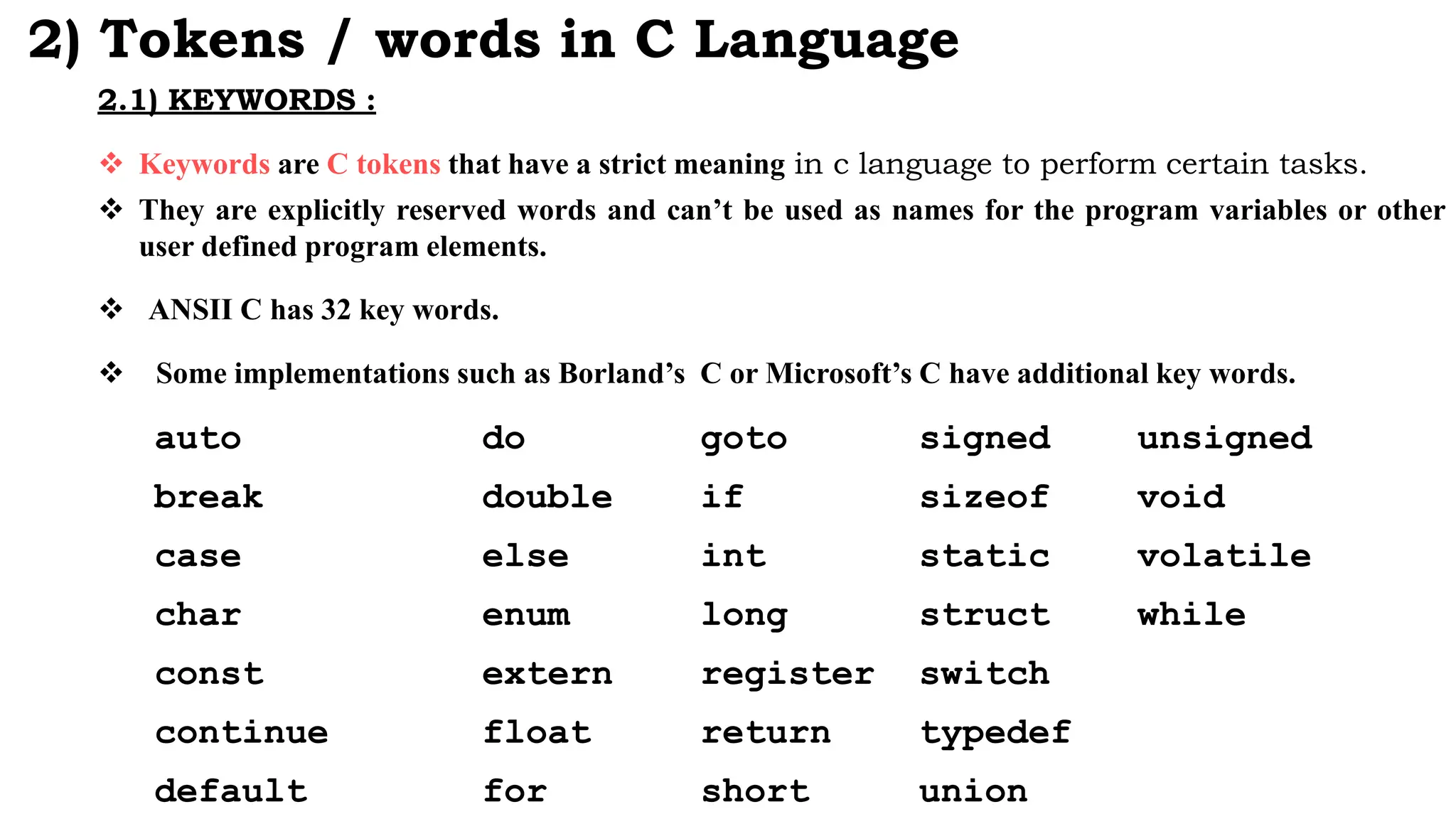
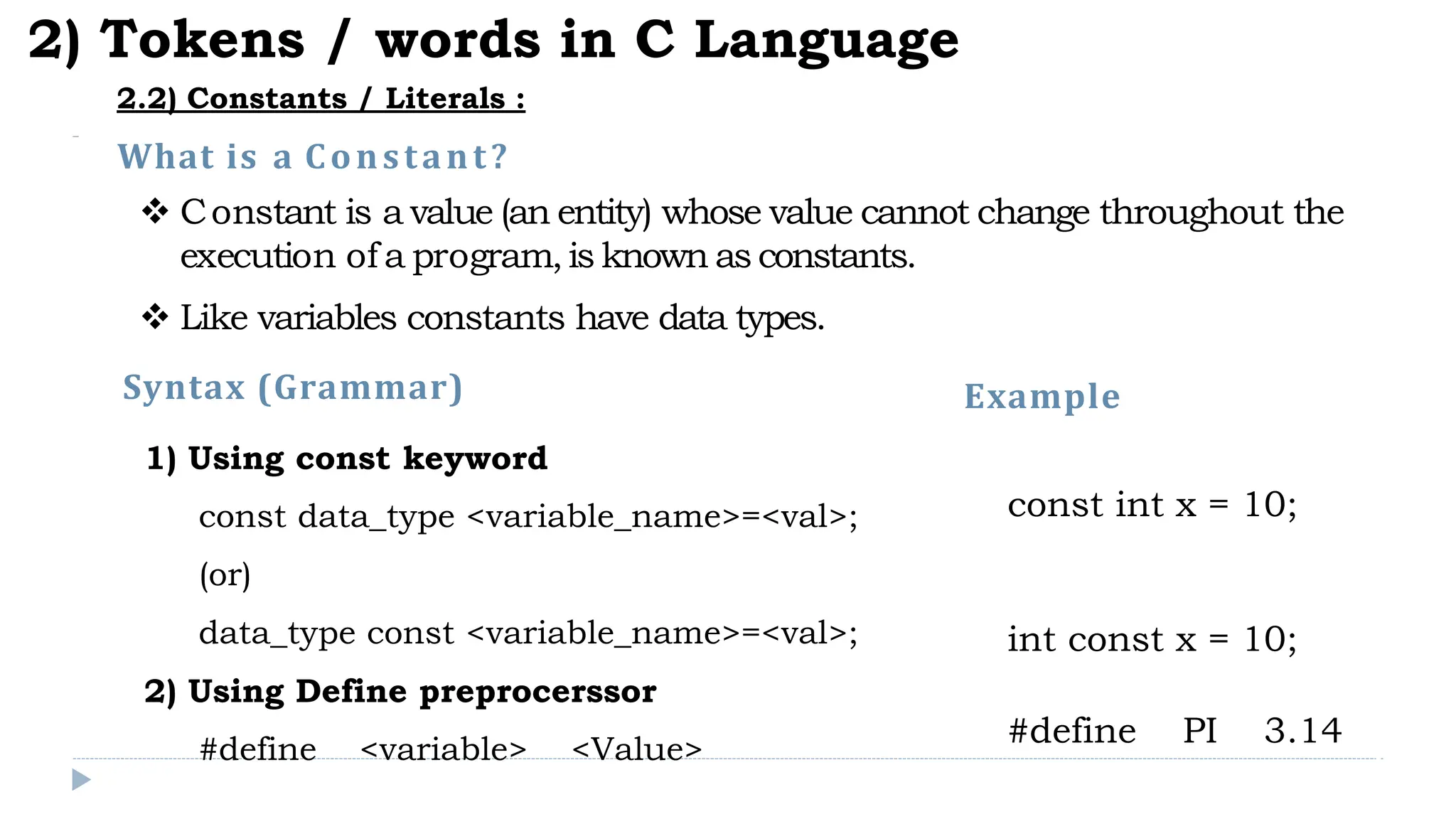
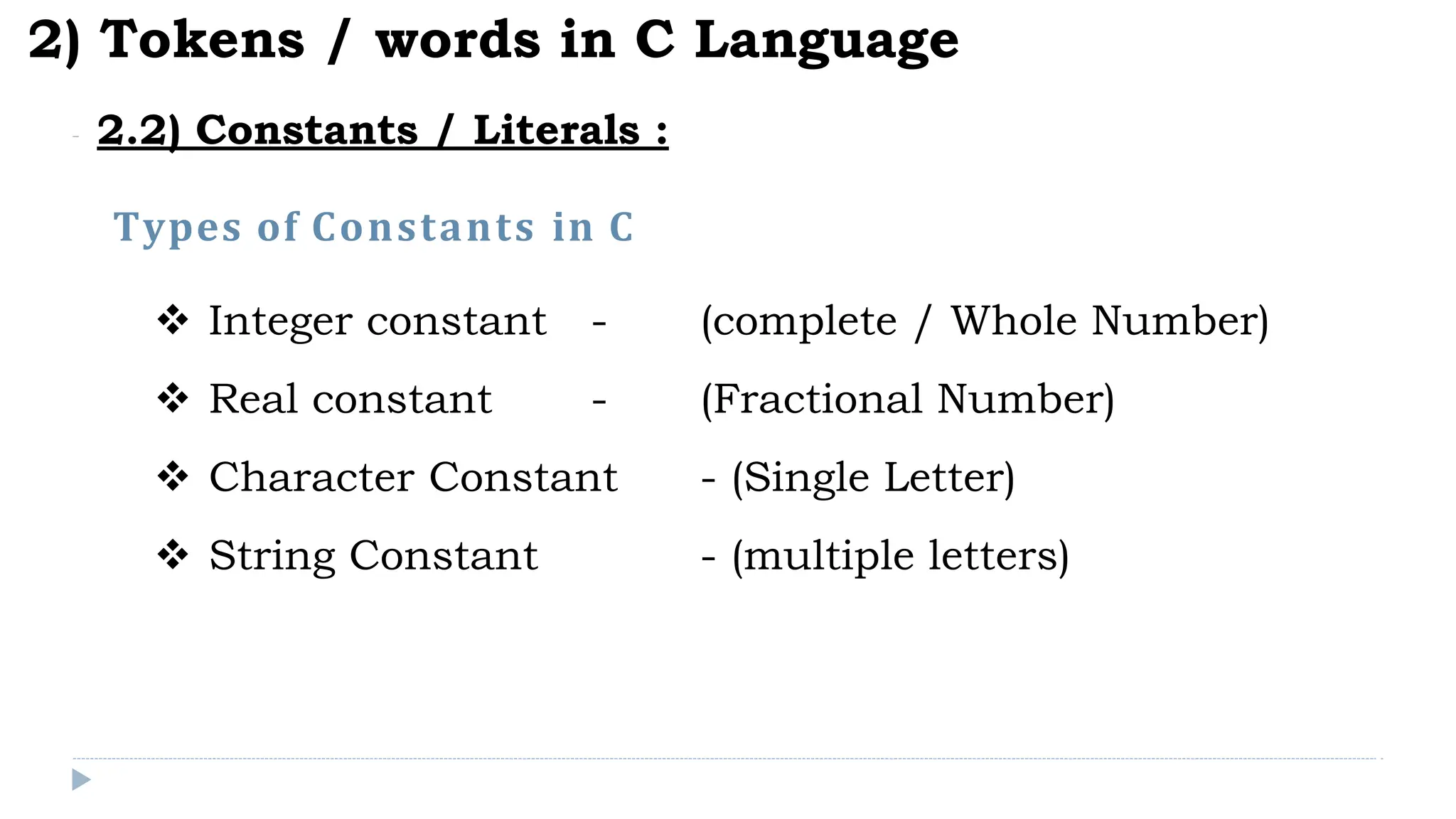
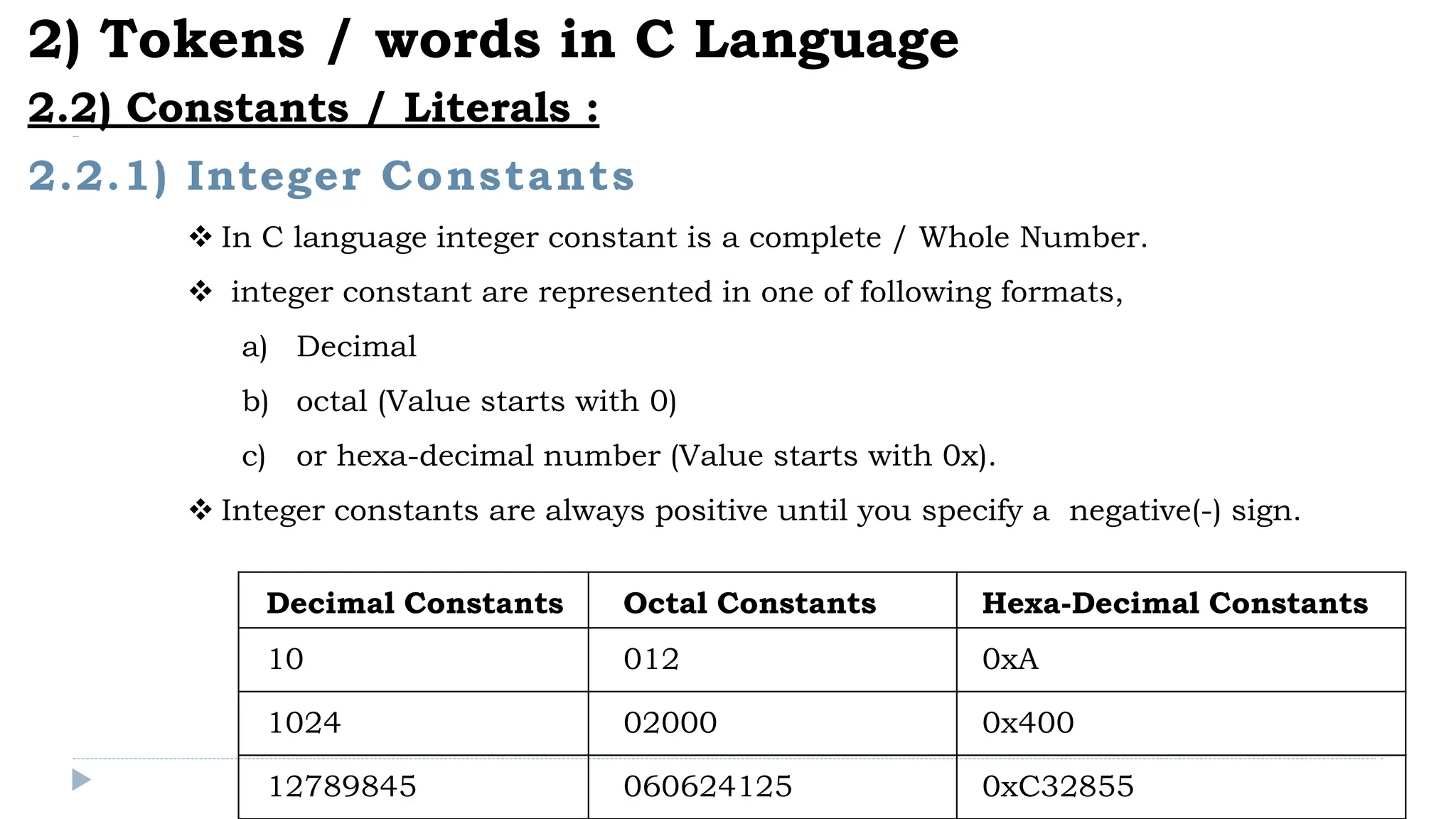
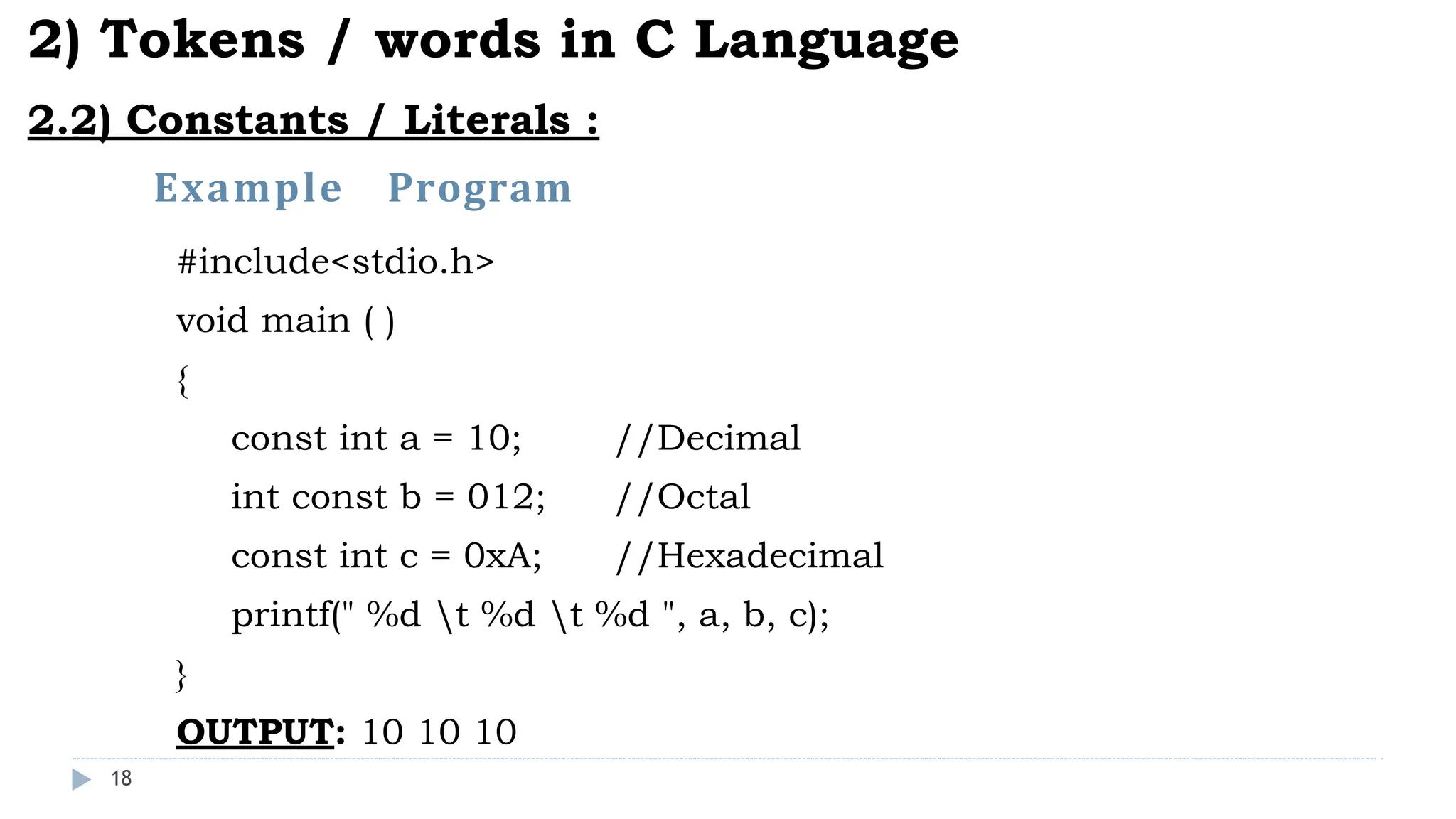
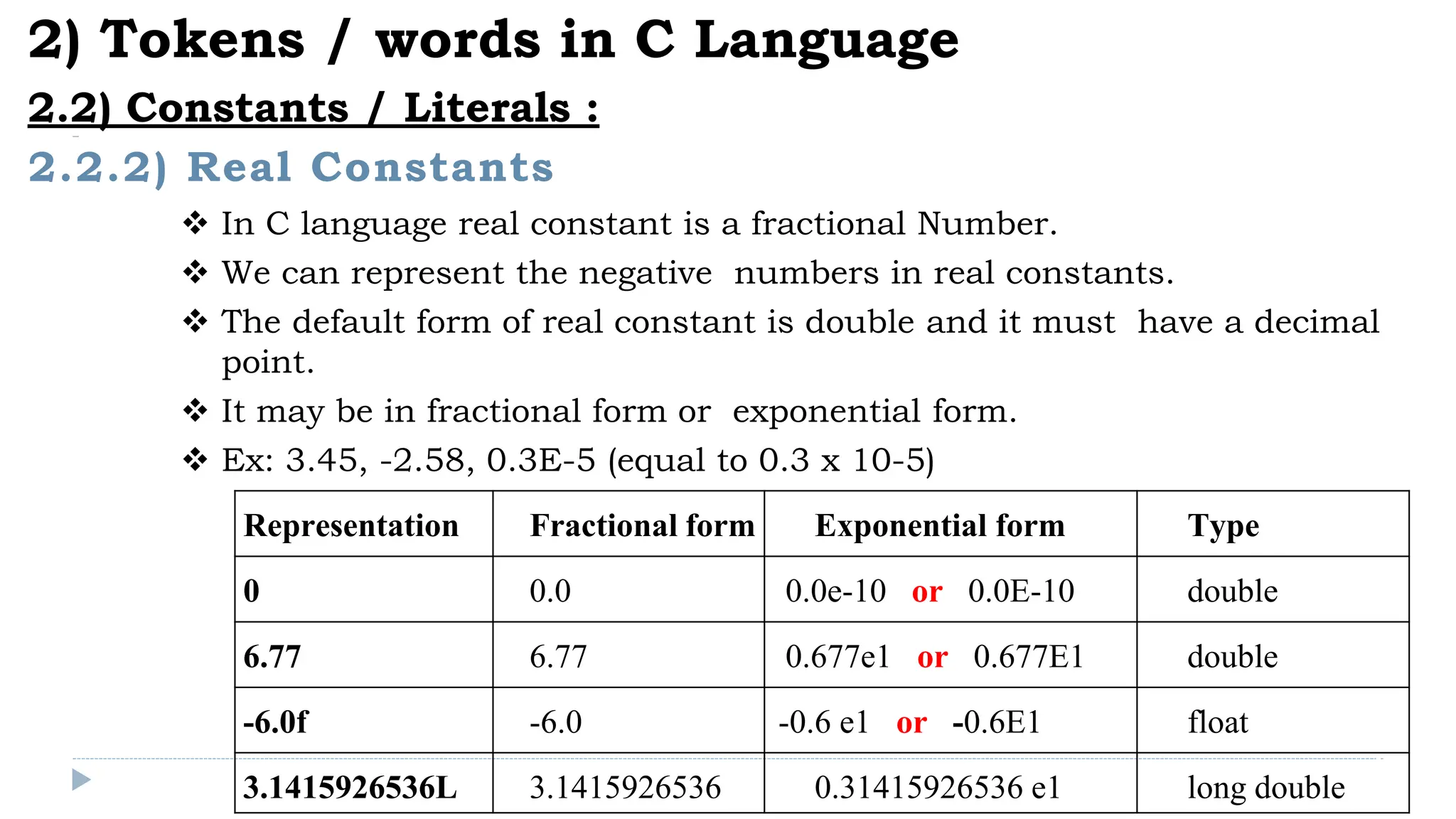
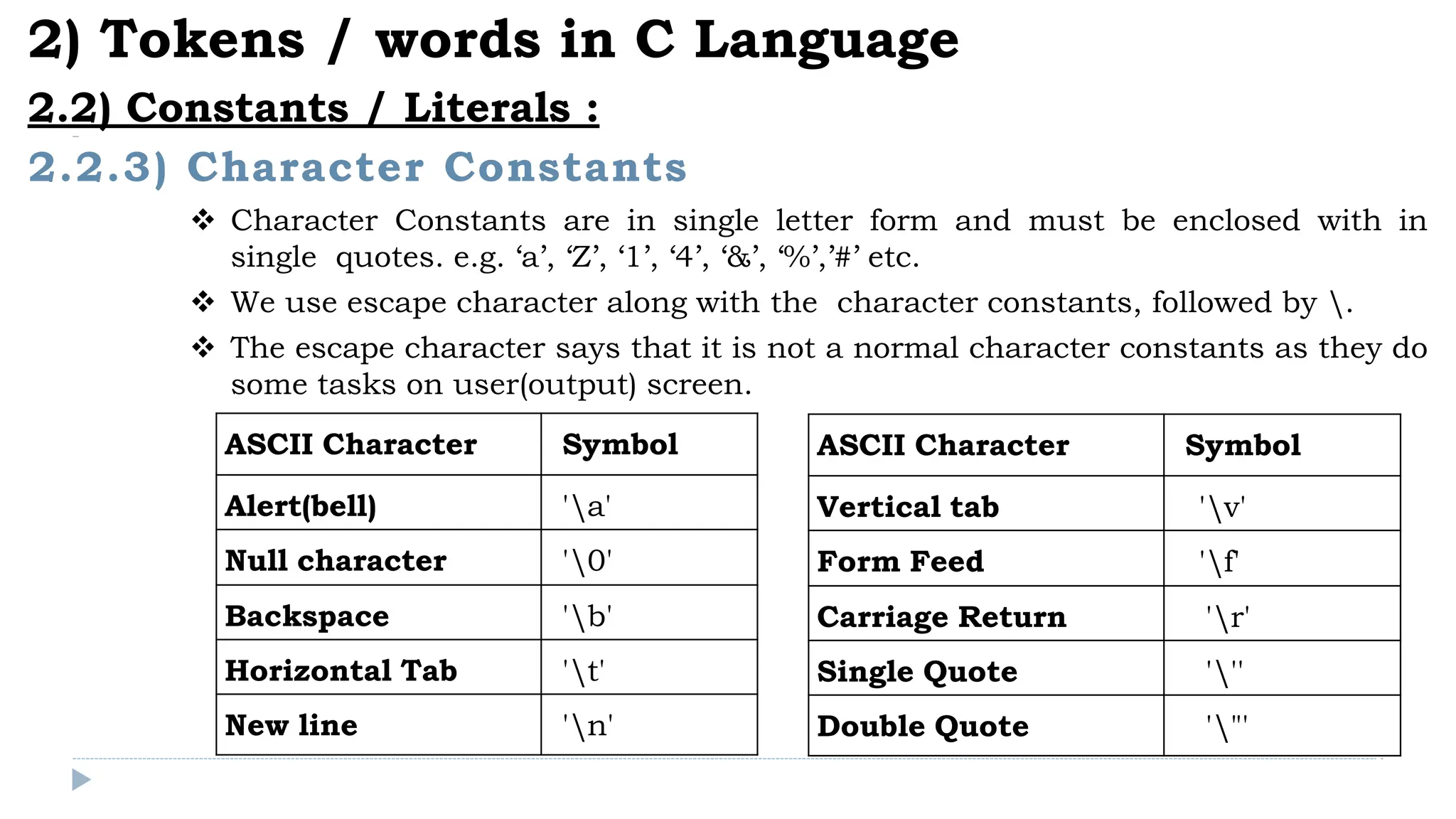
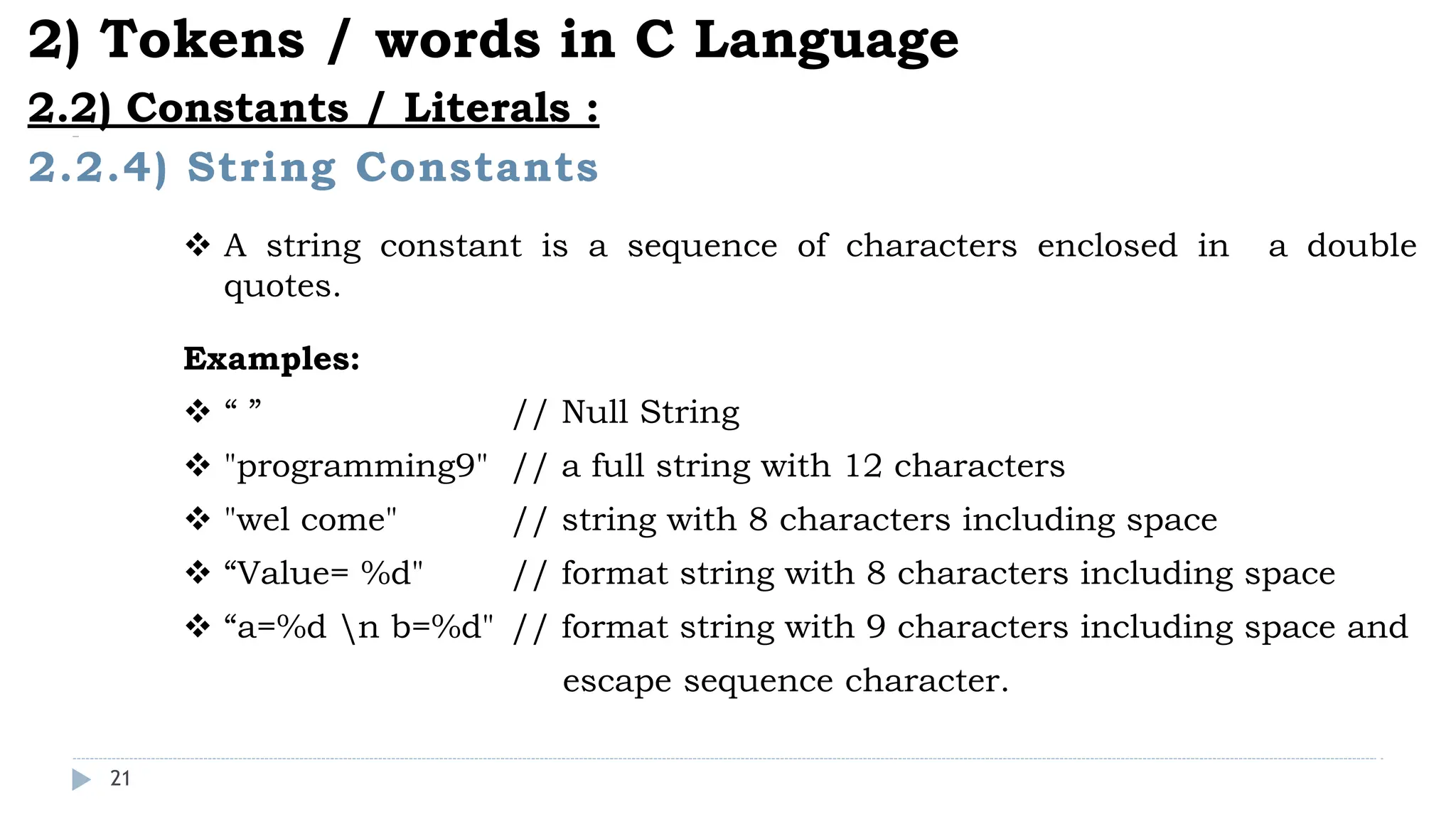


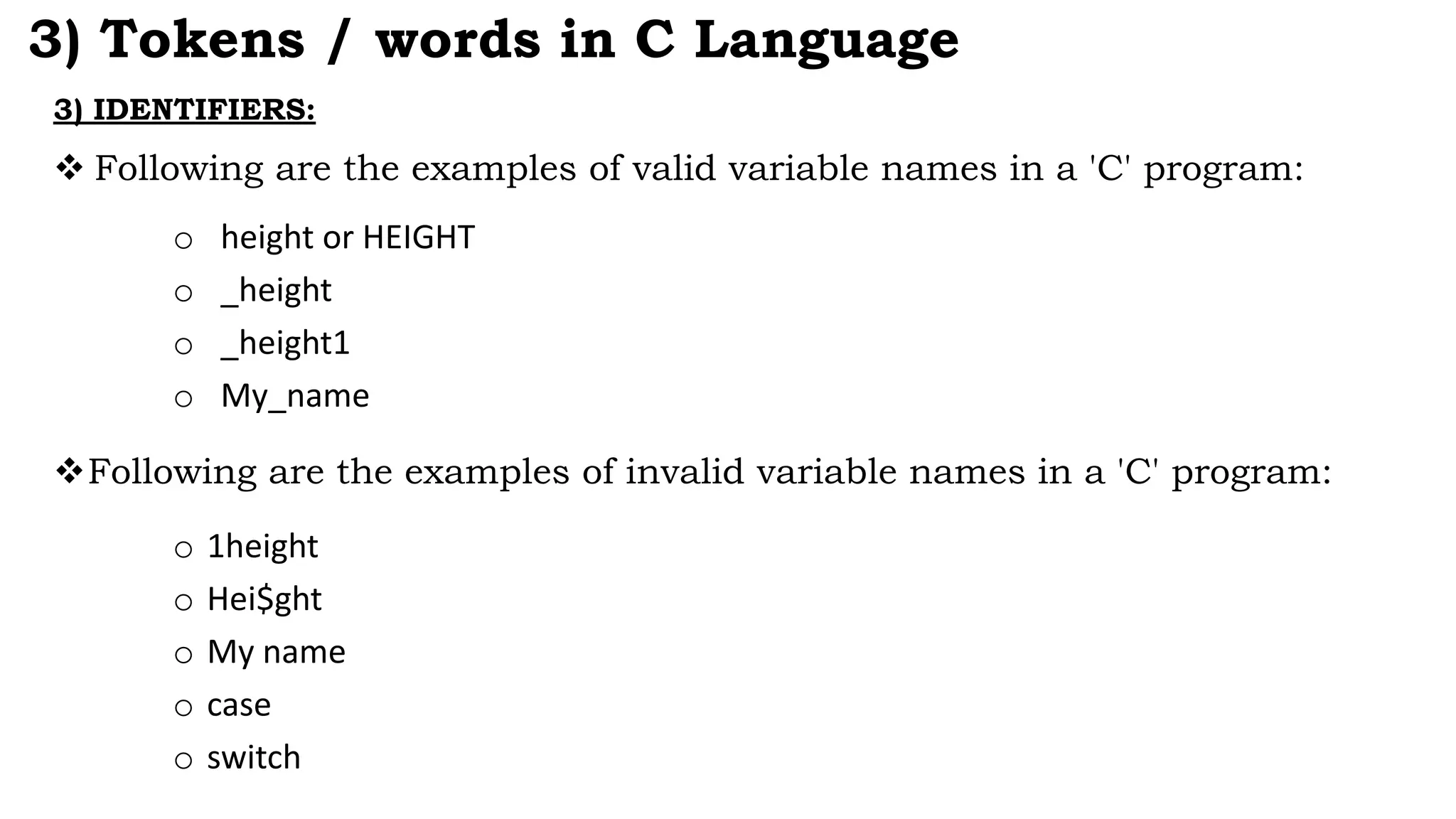
![3) IDENTIFIERS:
3) Tokens / words in C Language
1) Declaration without initialization:
data_type <variable_name1> [,<variable_name2>, …… ] ;
2) Declaration with initialization:
data_type <variable_name1>=<val1> [,<variable_name2>=<val2>, …… ] ;
Declaration Syntax (Grammar)
1) Declaration without initialization:
int x;
float x,y,z;
2) Declaration with initialization:
int a=10;
float x=20, y=30, z=-40;
Declaration example](https://image.slidesharecdn.com/featuresofclanguage-part1-240510114508-94f920b1/75/Features-and-Fundamentals-of-C-Language-for-Beginners-25-2048.jpg)
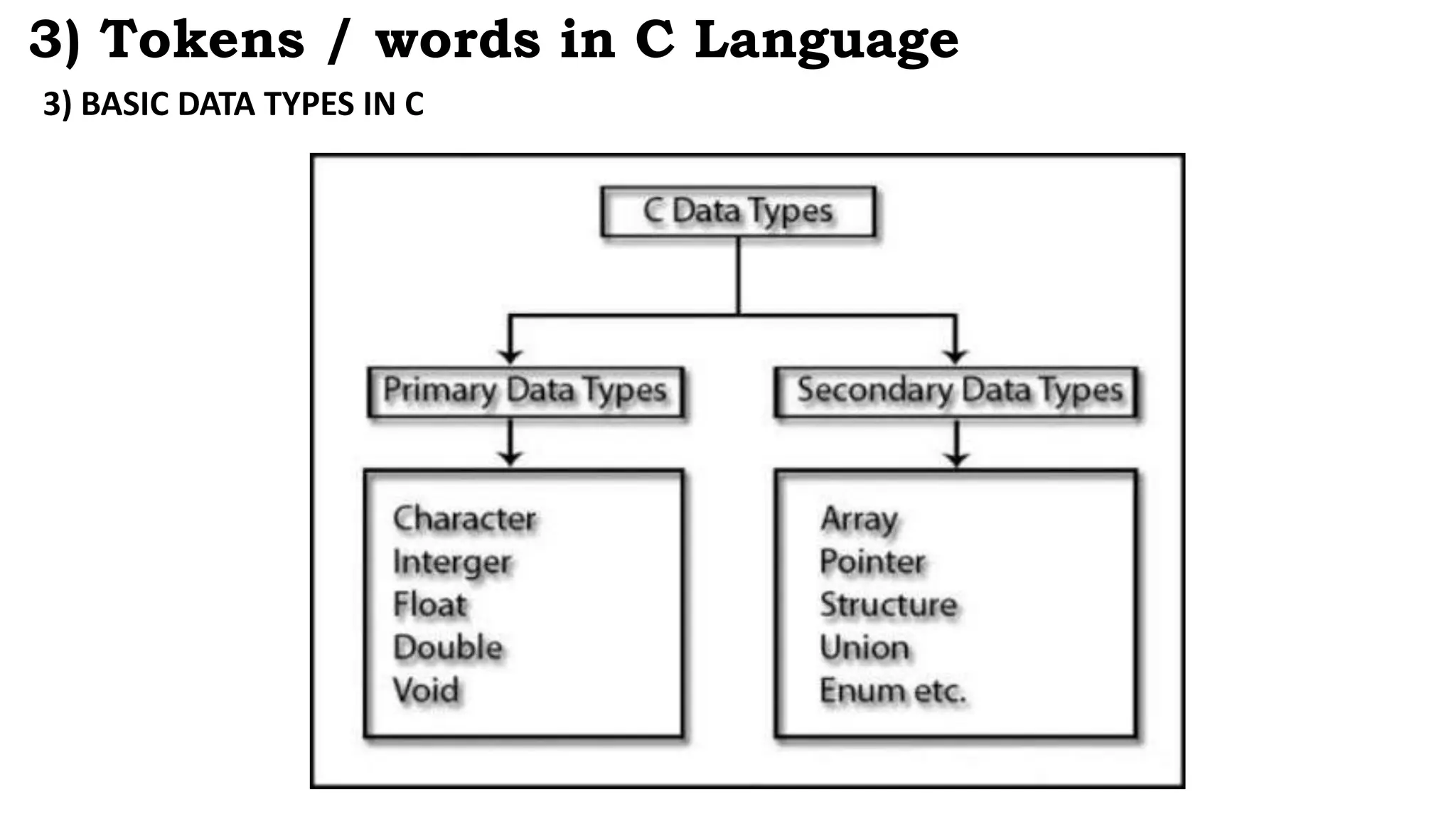
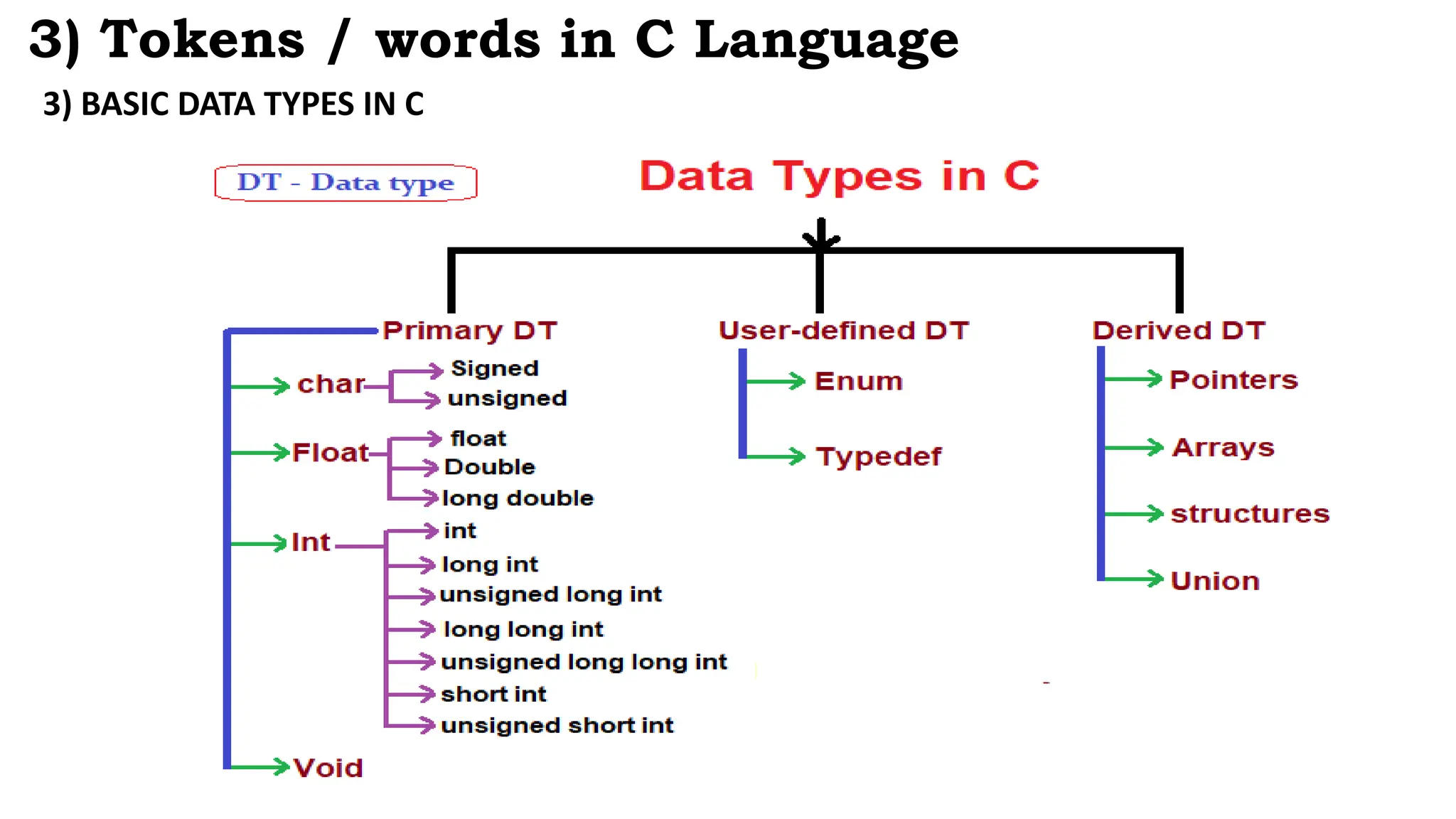
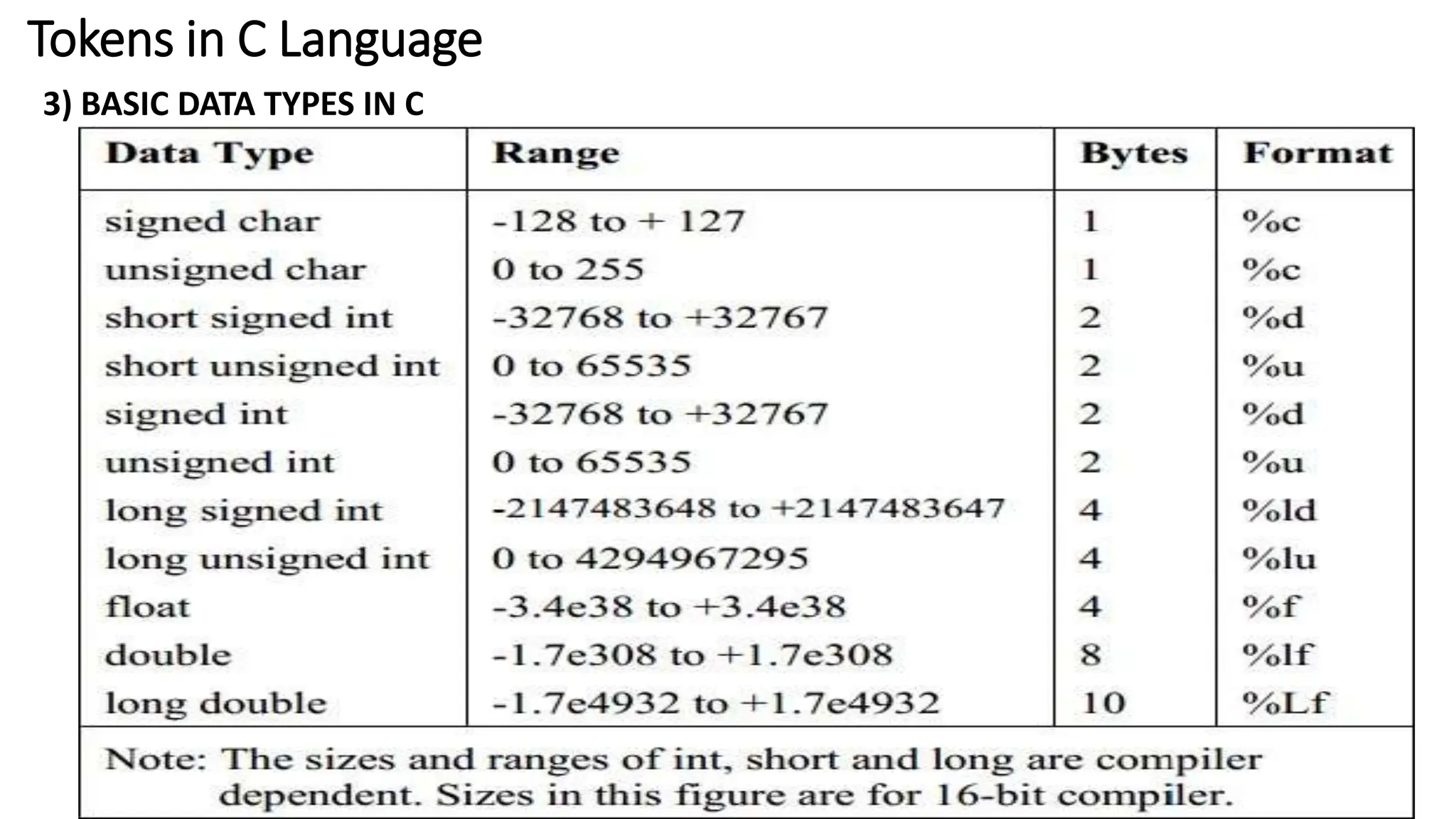

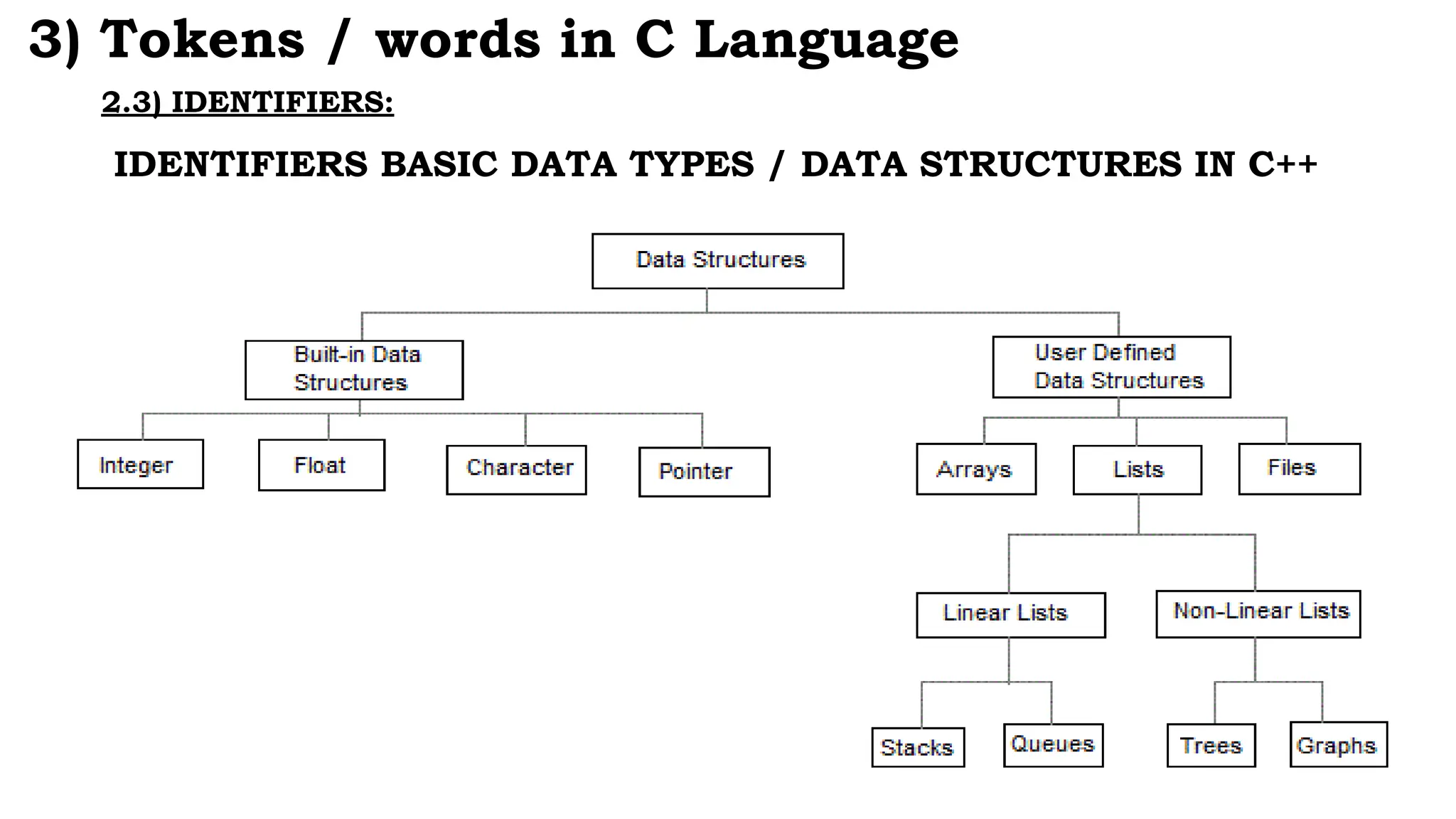
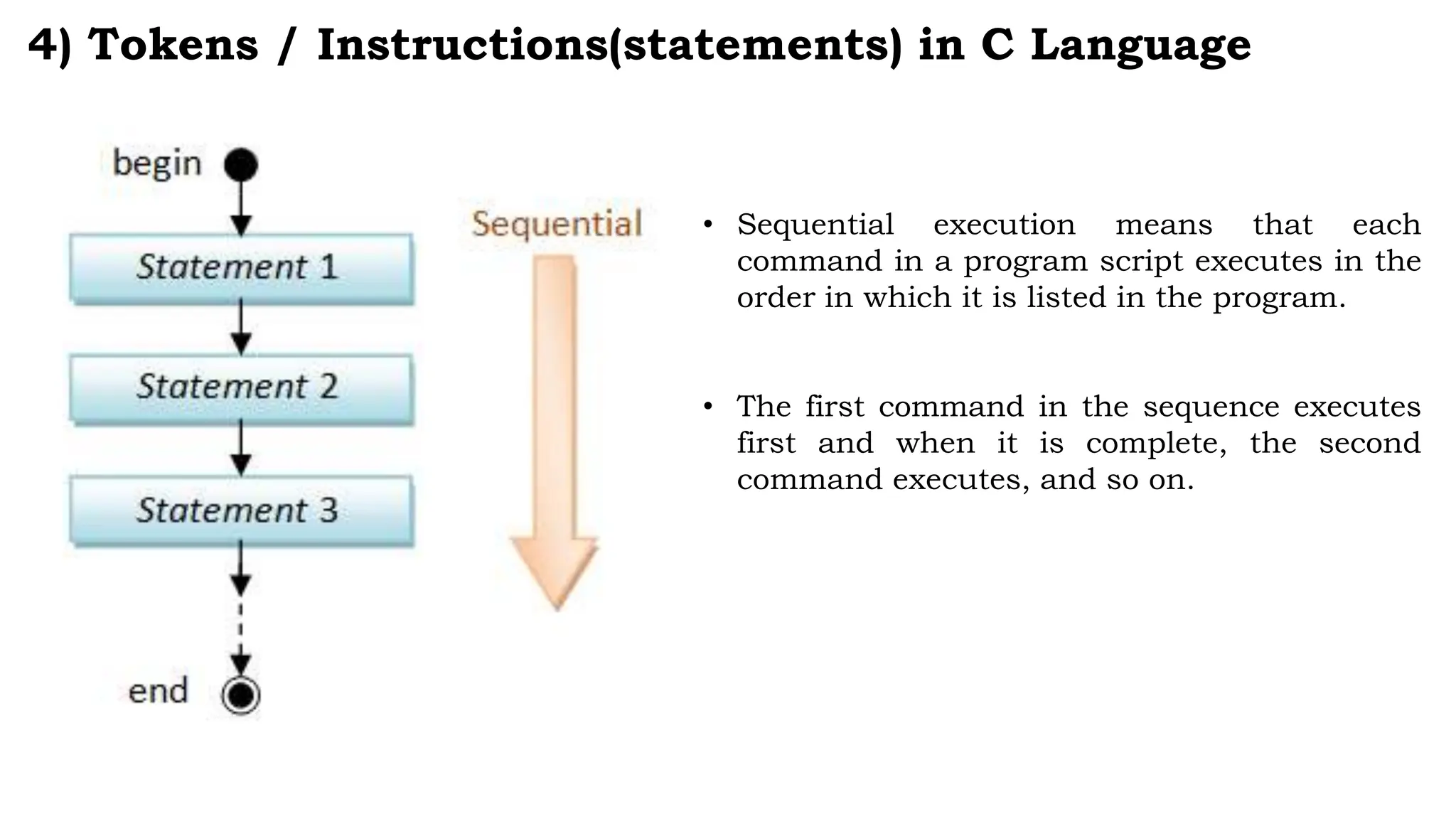
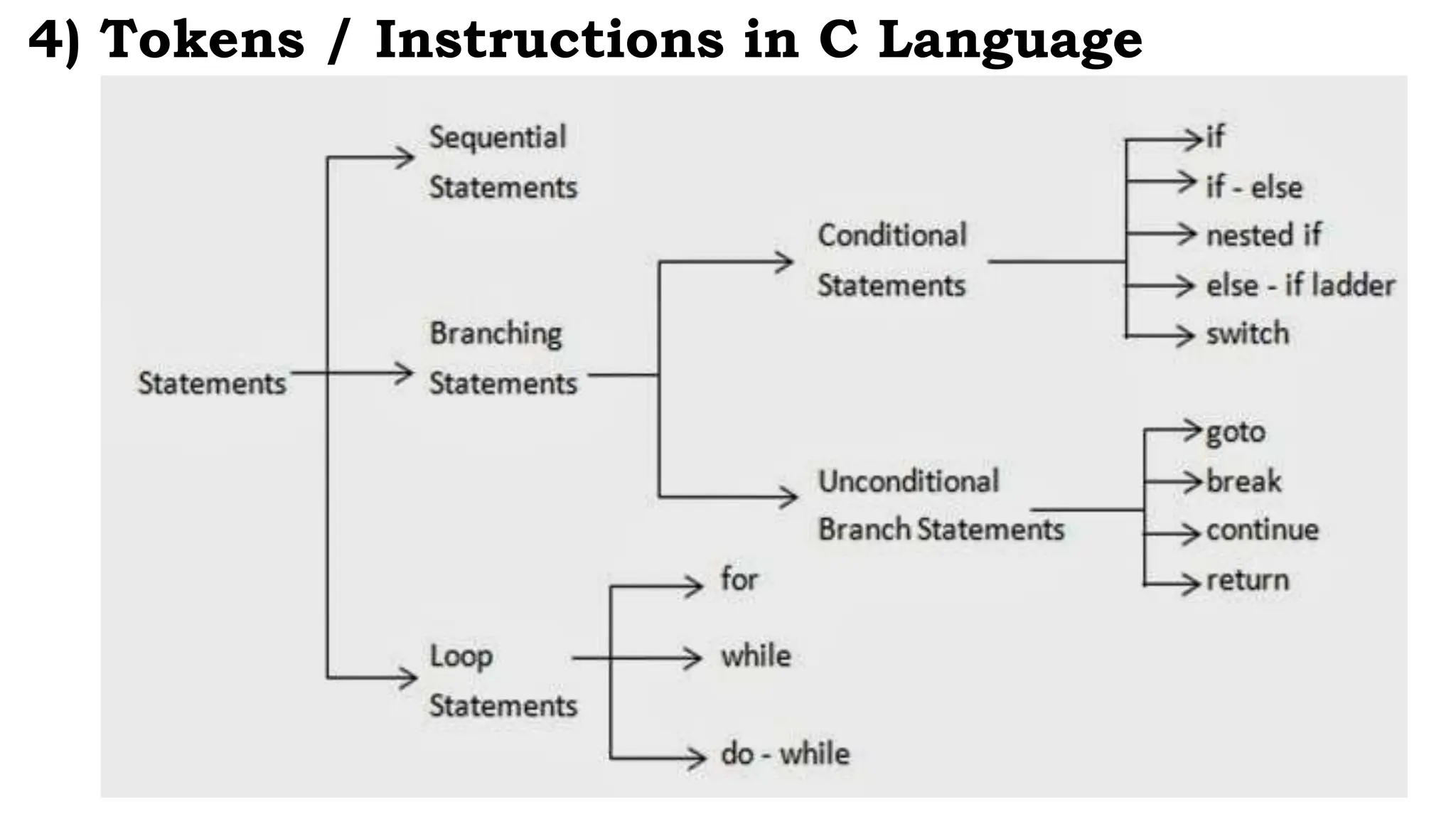
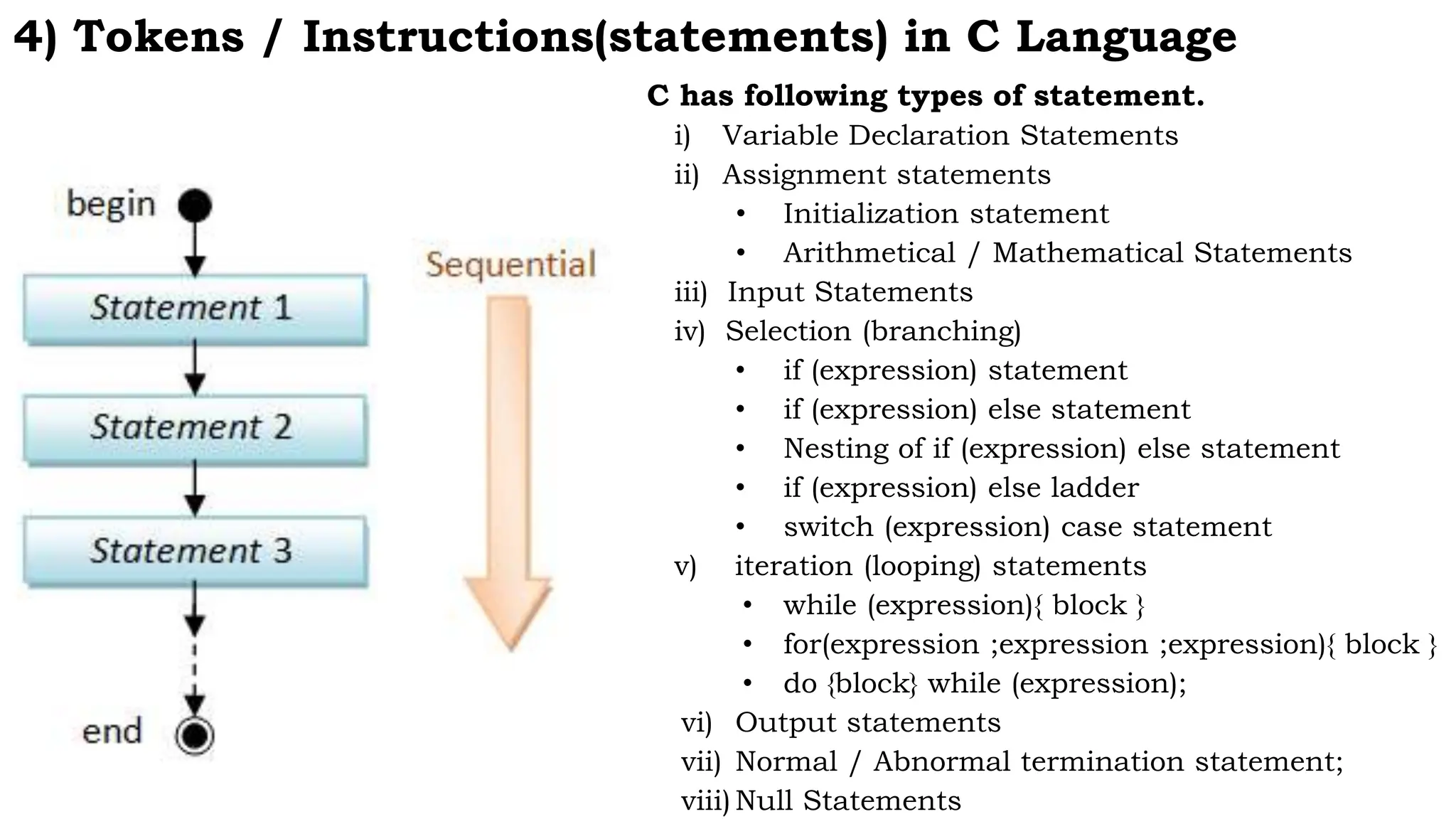
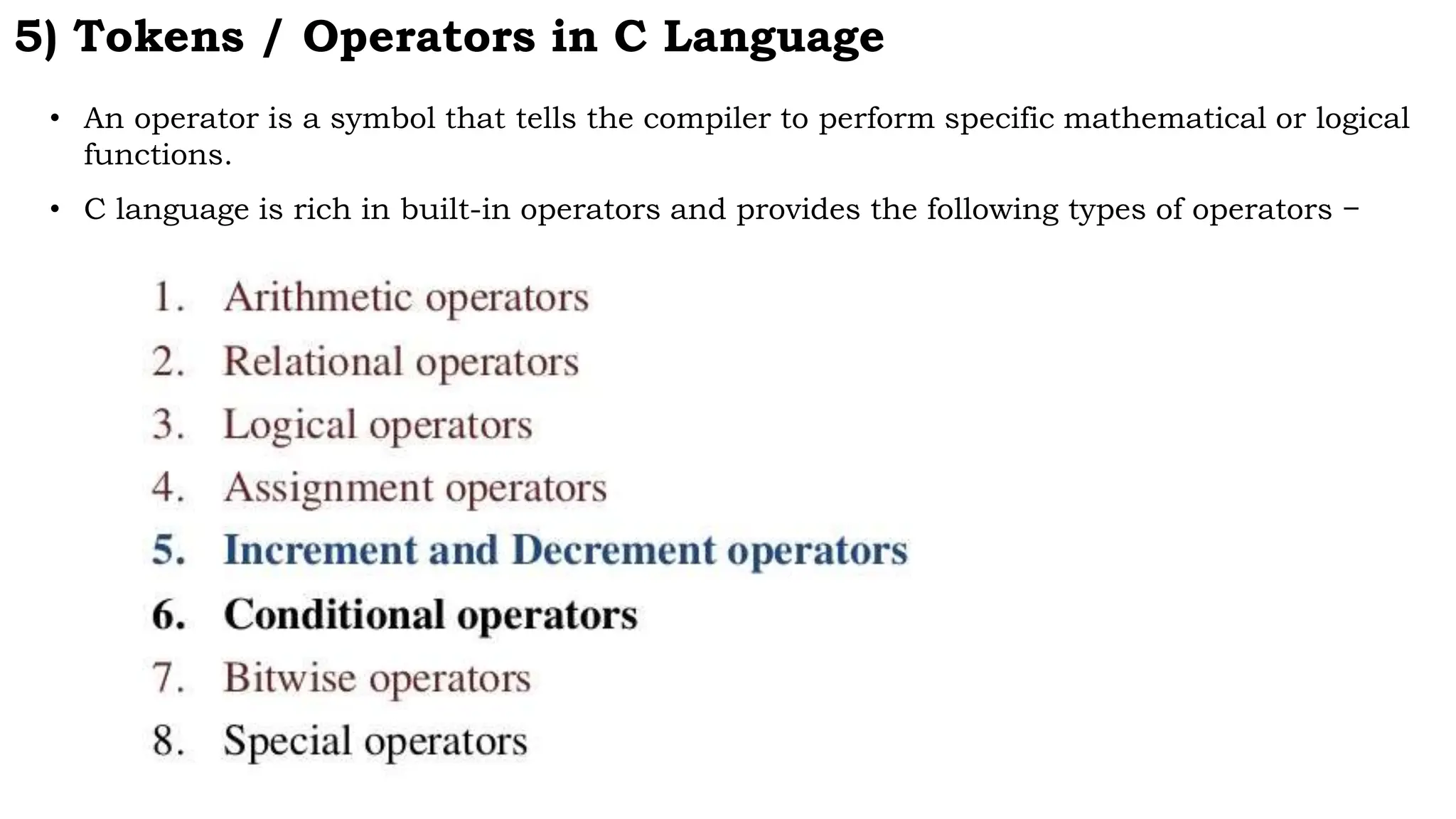
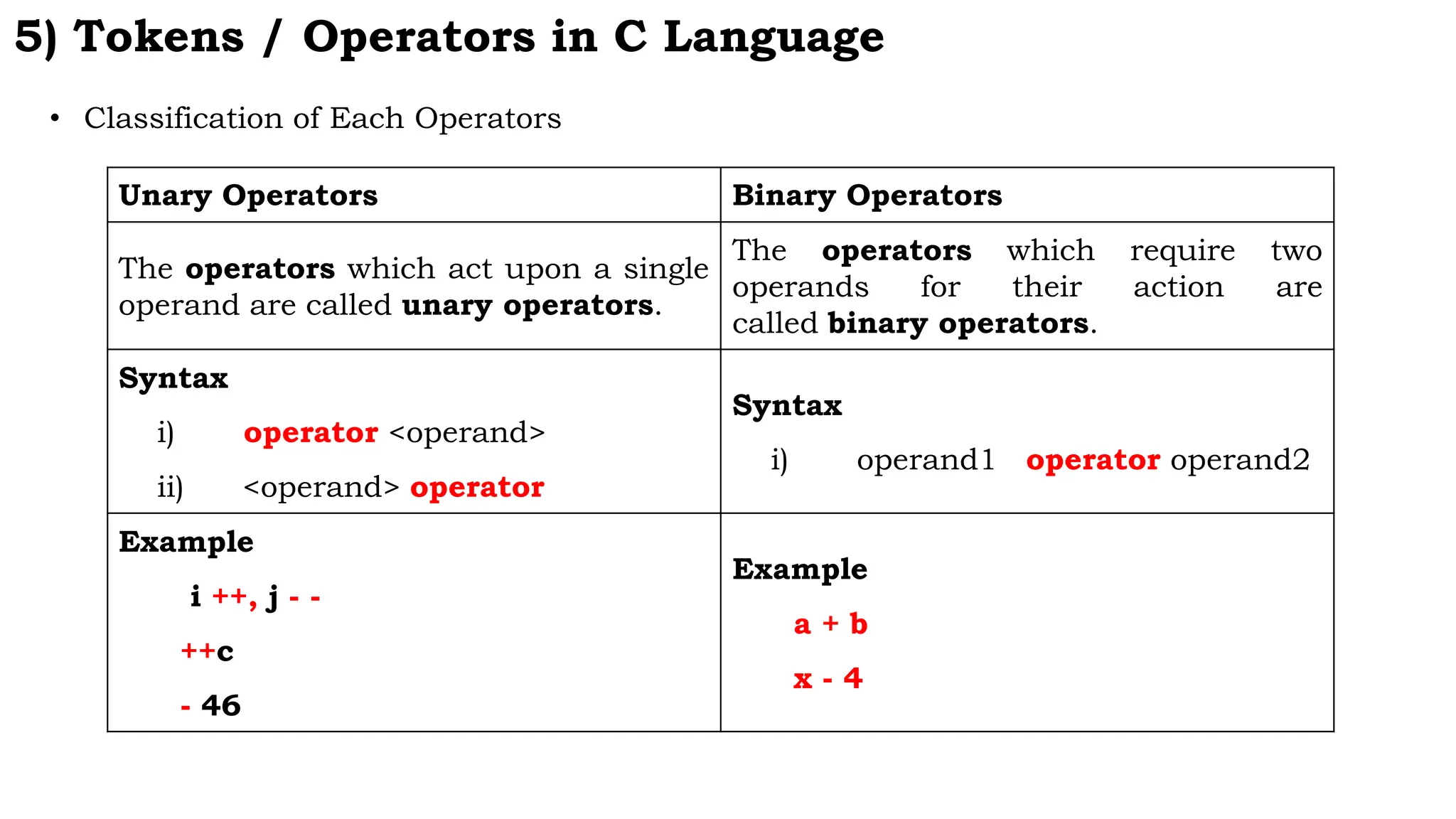

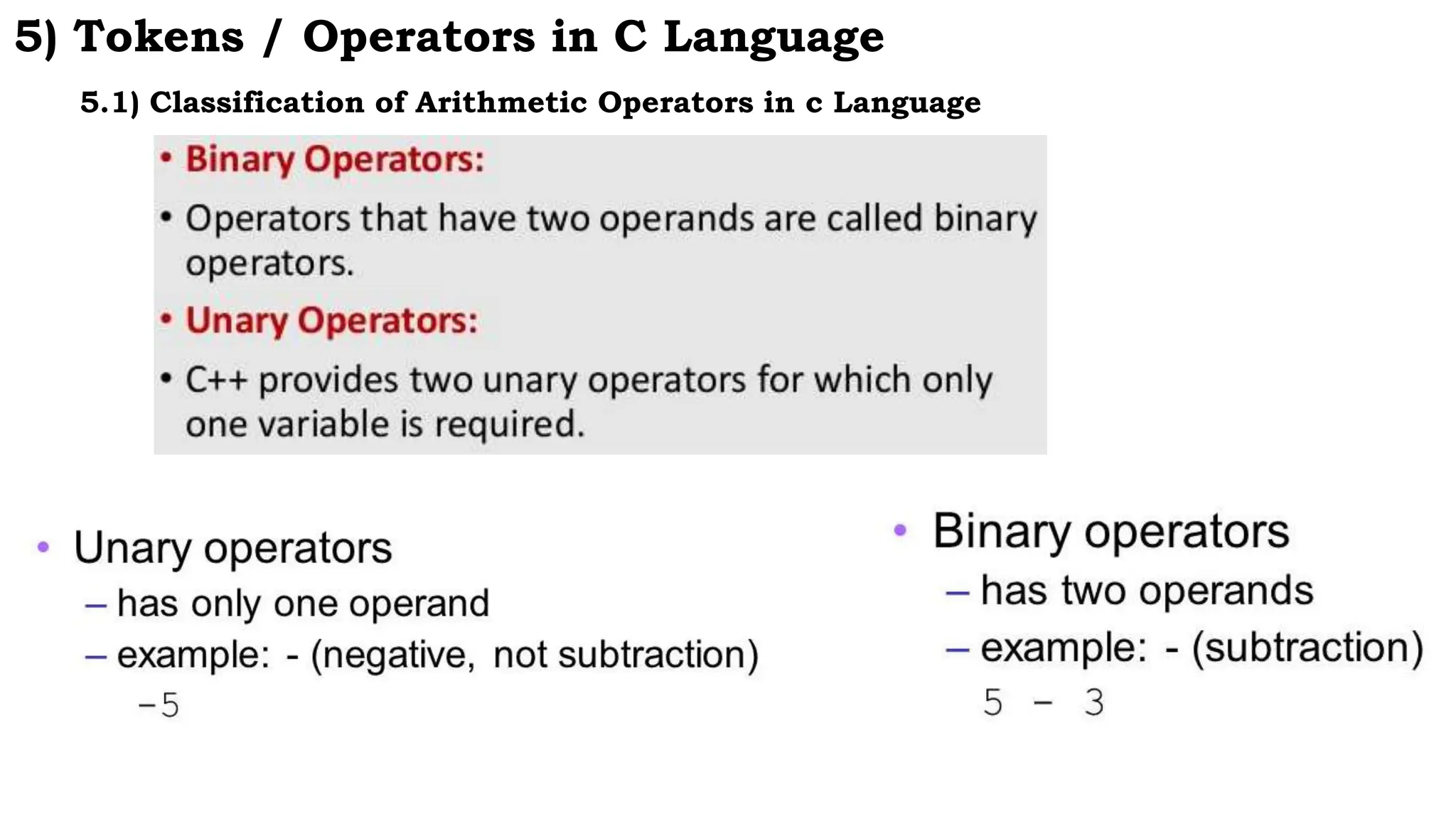
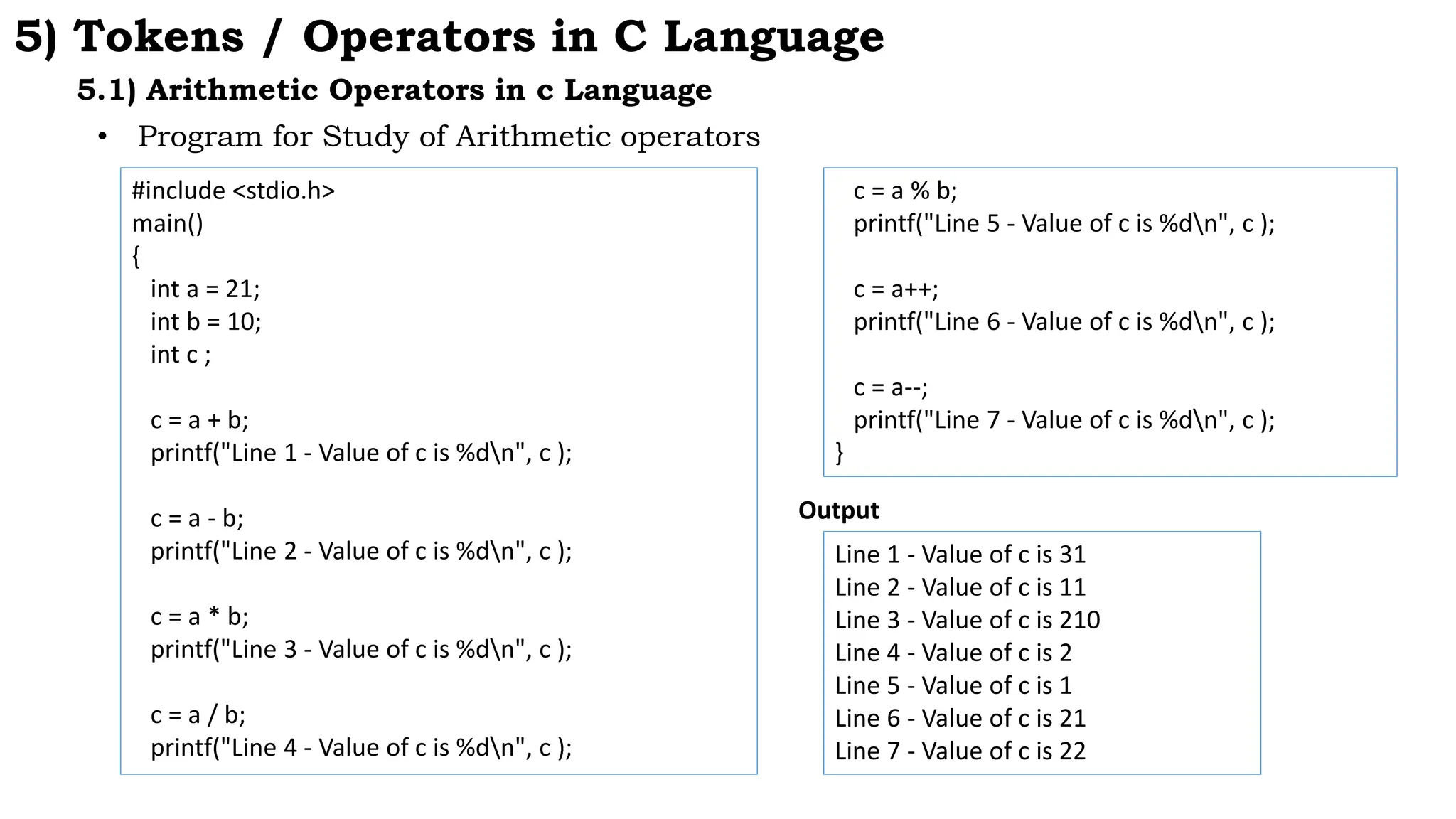

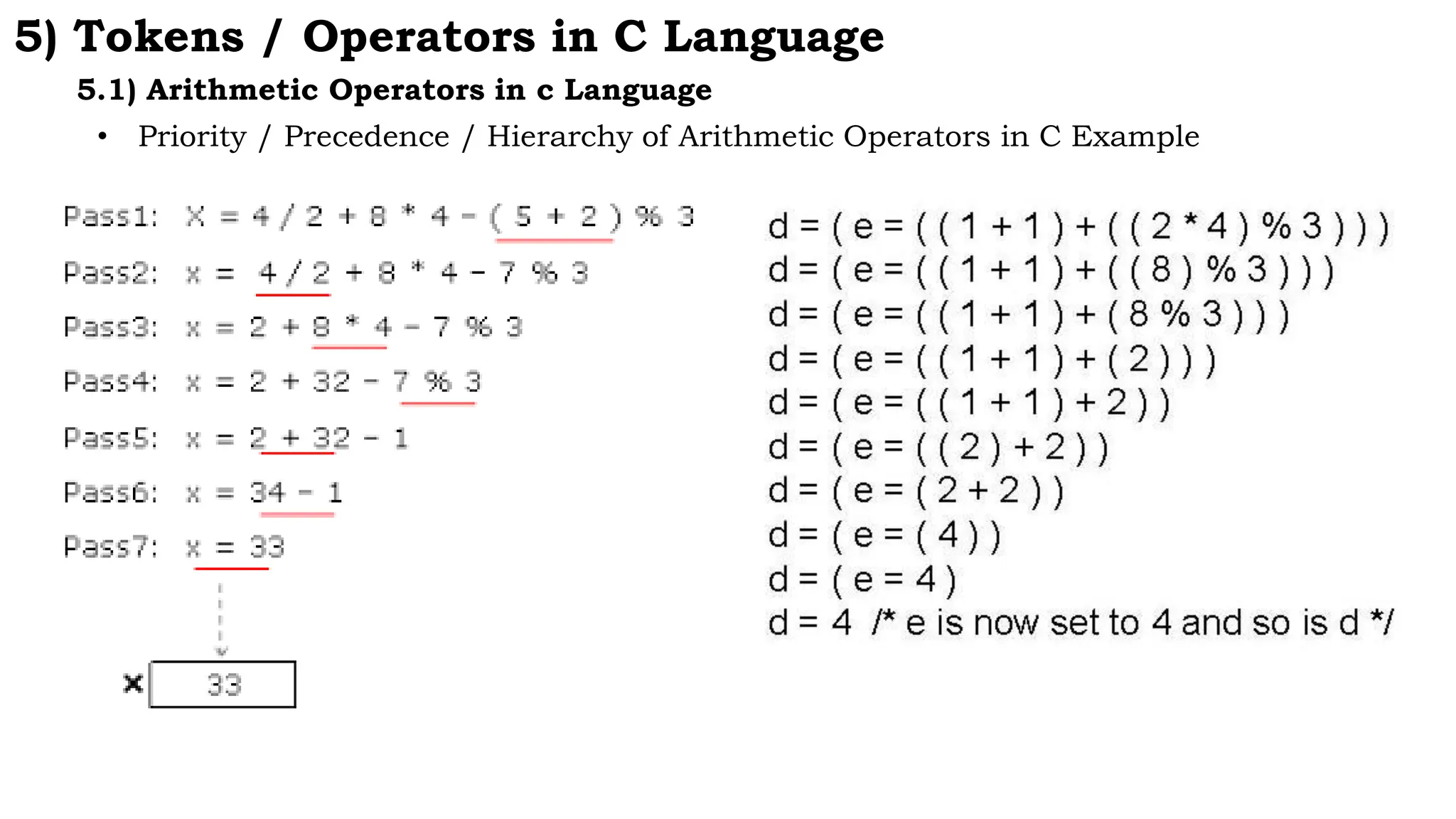
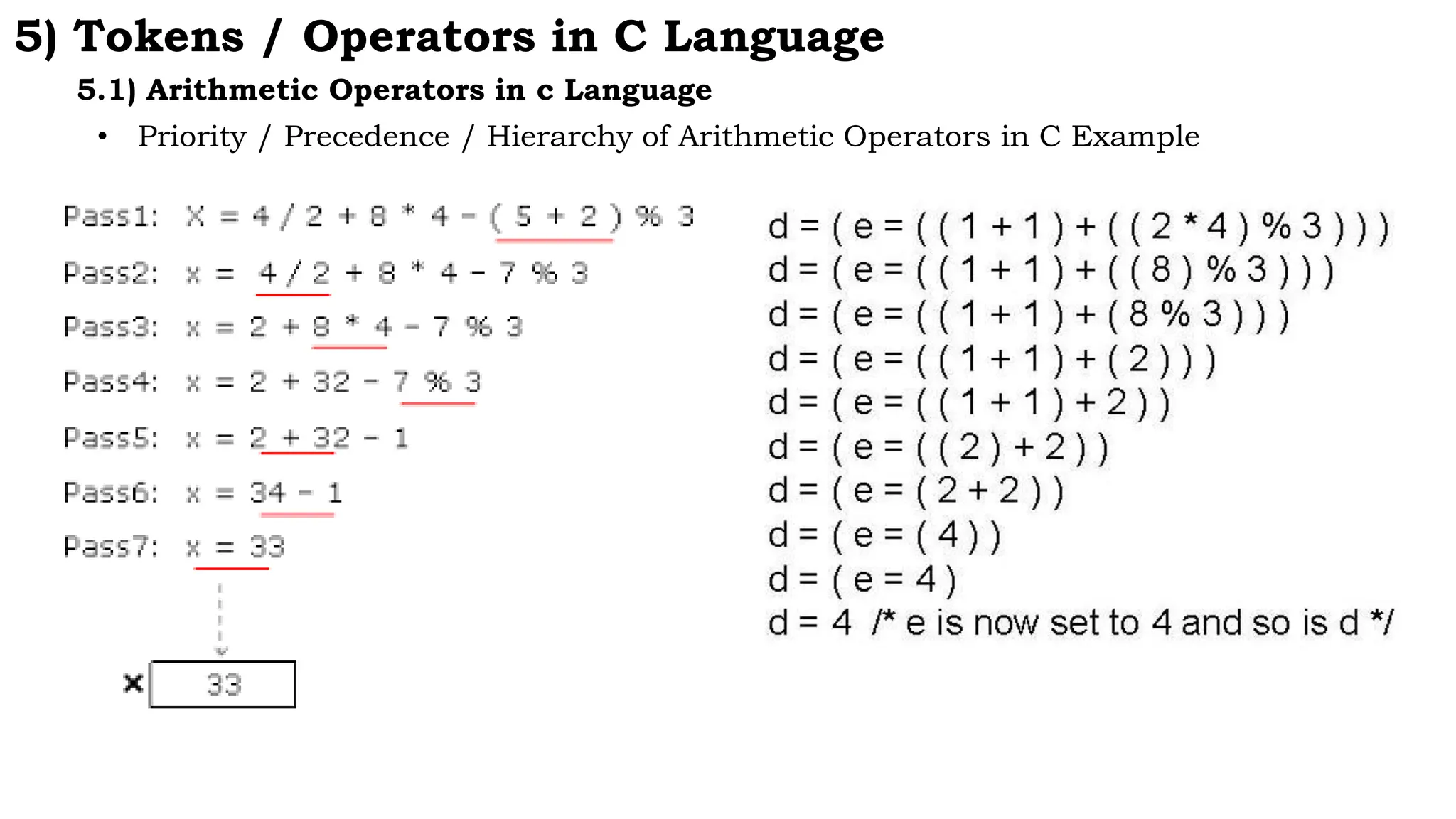
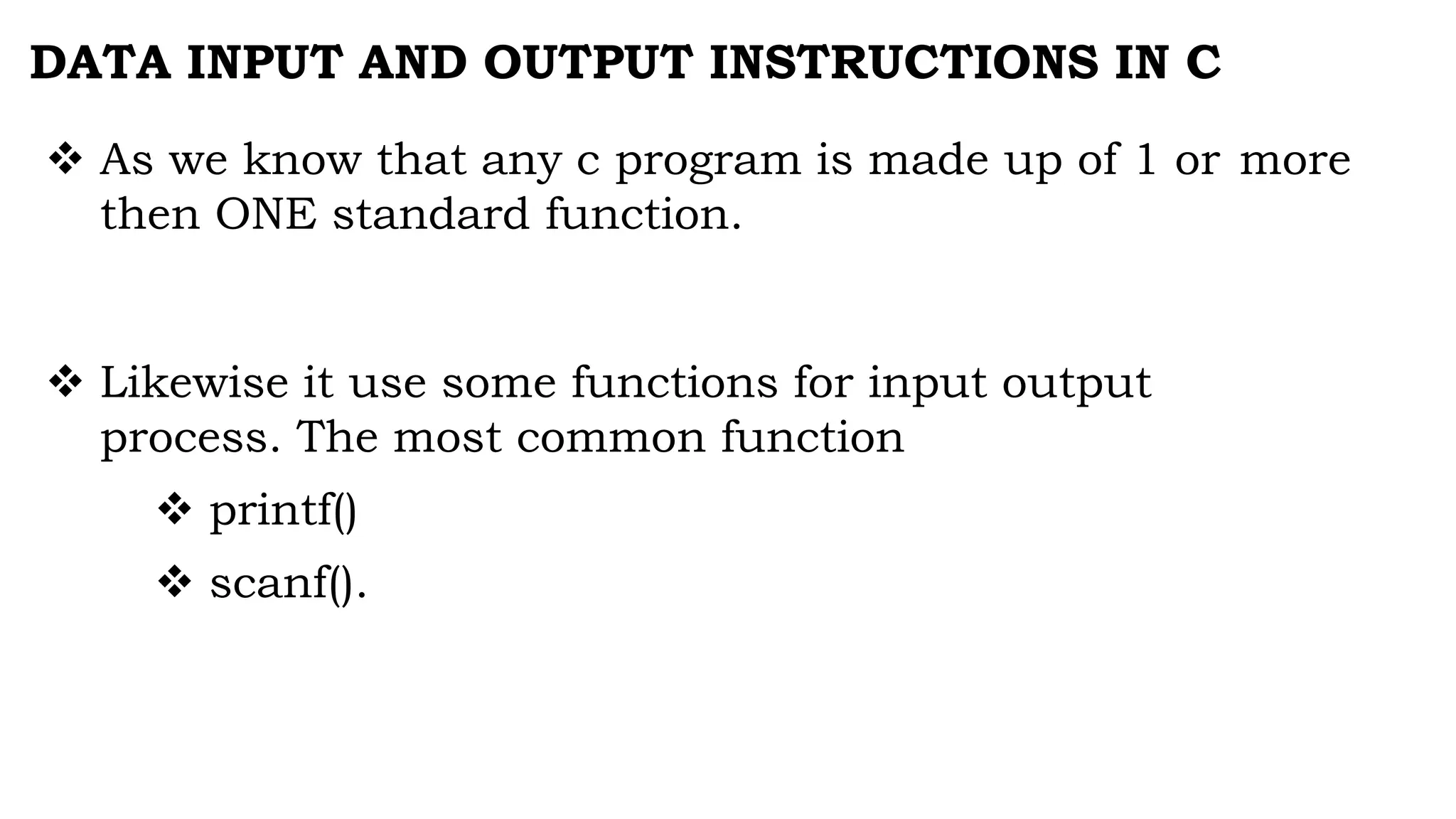
![printf() Function
printf() function is used to display something on the console or to display the value of
some variable on the console.
The general syntax for printf() function is as follows
printf(<”format string”>[,<list of variables>]);
To print some message on the screen
printf(“God is great”);
This will print message “God is great” on the screen or console.
Format specifiers in “format string” must match with respective variable
data type.
Number of format specifiers must be equal to number of variables in list of
variables.](https://image.slidesharecdn.com/featuresofclanguage-part1-240510114508-94f920b1/75/Features-and-Fundamentals-of-C-Language-for-Beginners-43-2048.jpg)
